FUEL QUALITY
Ask yourself these seven questions to make sure your fuel quality program is working for you.
The renewable fuel has superior performance to the product it replaces.
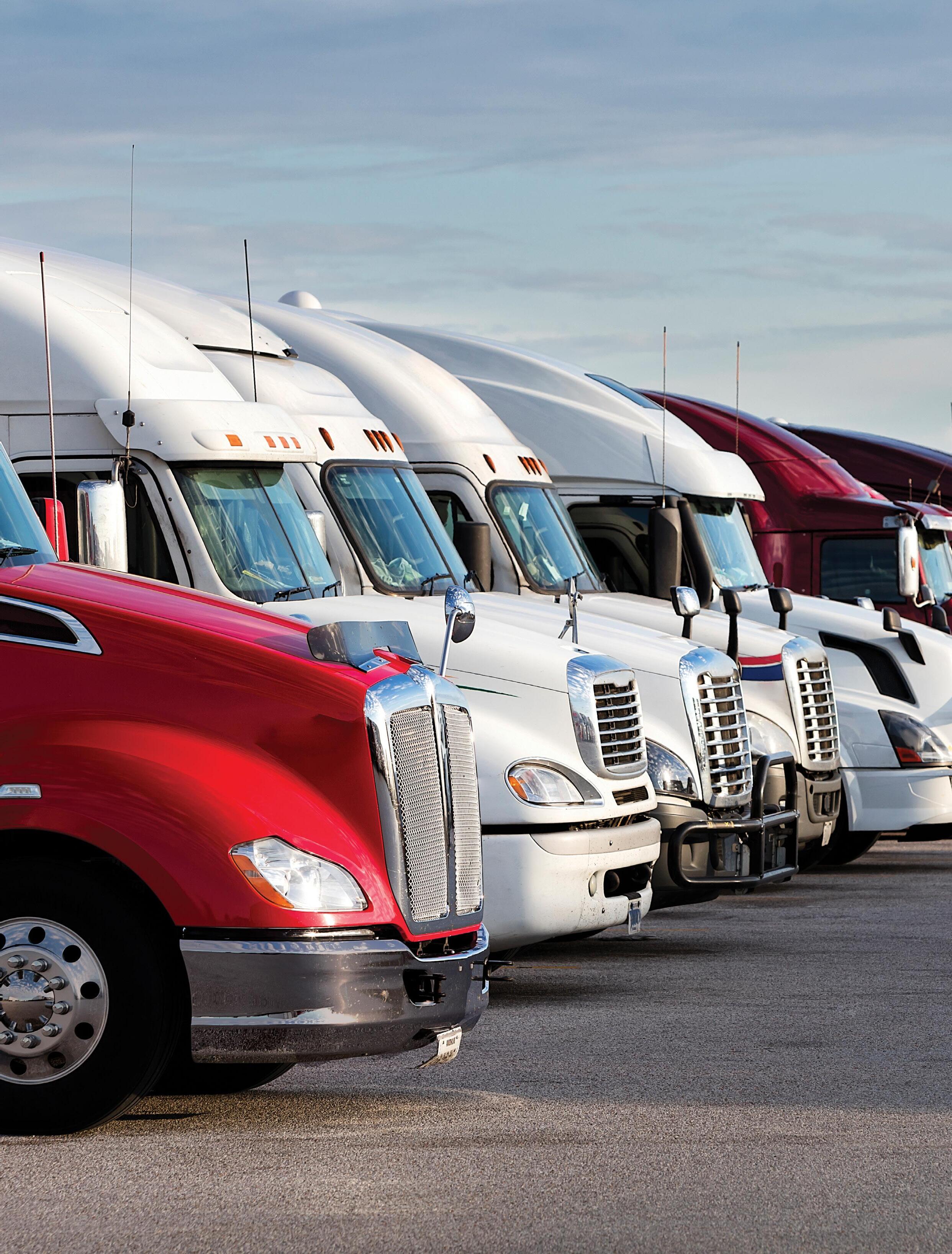
In the Lead American Coalition for Ethanol’s Ron Lamberty
Renewable Diesel
SUMMER 2023
We made 4x’s the profit by converting our IBA car wash to a mini-tunnel.
Modernize Your Car Wash To Make More Money

Whether it’s the economy or the green push to electrics, it’s no secret that petro profits in your convenience store are down. With a simple and easy ModBrite™ mini-tunnel conversion, you can increase profits four times of your existing IBA.
We can use the same structure or new build, eliminate traditional construction and add a conveyor belt system for a first-class customer experience. Compete with other car washes in your area. Turn those driveoff’s into revenue for your convenience store. Contact us today!
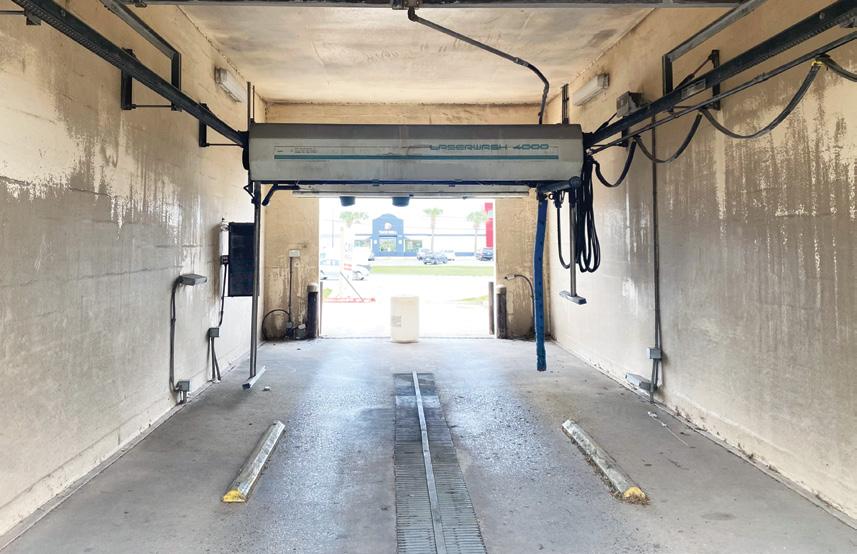
✦ Increase car wash revenue









✦ Invest in the future of your industry




✦ Opportunity to sell memberships

✦ Easy modular installation
✦ Bring more people to your store with a car wash people will love

BEFORE AFTER The Mini-Express Tunnel Specialists
#B5130
210.736.1892 www.autobriteco.com/modbrite Booth
the QR code to check out the ModBrite™ in action.
Scan

SUMMER 2023 COVER STORY How to Improve Fuel Quality at Commercial Sites Ask yourself these seven questions to make sure your fuel quality program is working for you. In The Lead: How Does Ethanol Fit? American Coalition for Ethanol Senior Vice President Ron Lamberty discusses how ethanol fits into a net-zero future. Renewable Diesel Starts to Make Headway The renewable fuel has superior performance to the product it replaces. Acheiving Carbon Reductions Strategically Without doubt, the pursuit of carbon reductions has not lost any momentum. 34 30 24 38 FuelsMarketNews.com FMN Magazine SUMMER 2023 | 1
20
A
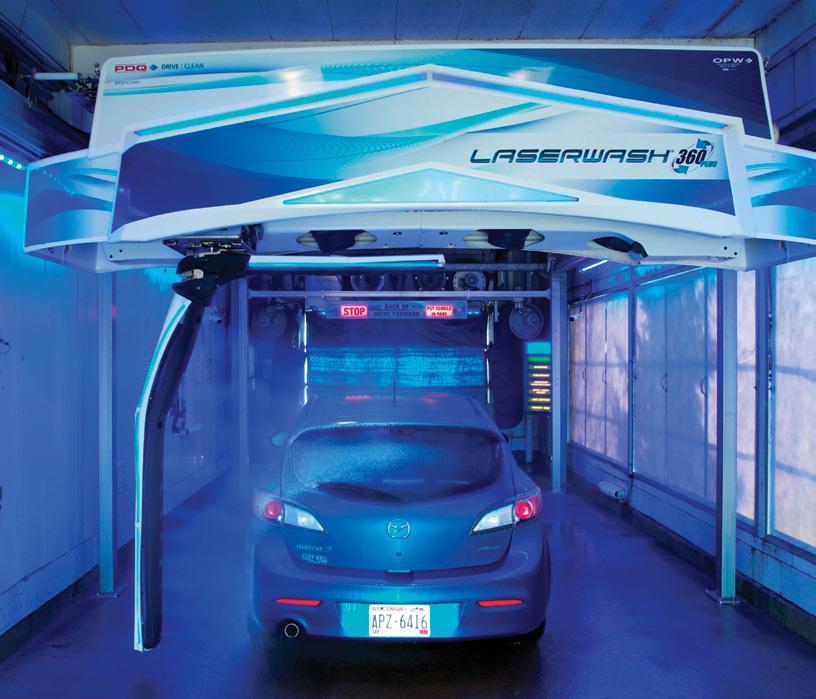
22
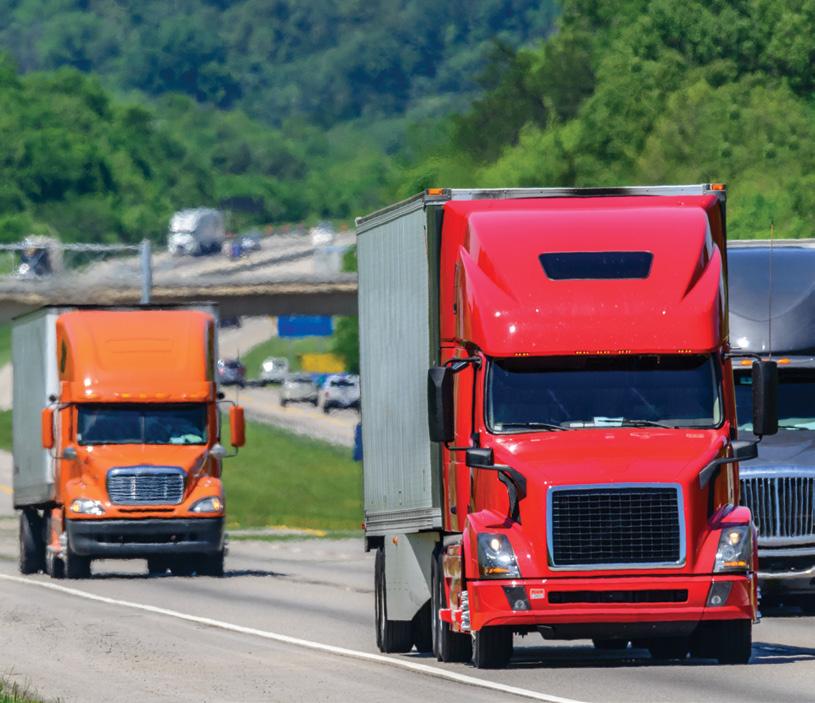
04 From the Editor 06 NACS News 08 Transportation Energy Institute 10 Fueled for Thought RETAILER OPERATIONS 12 Listen to the Real Experts UST service techs provide unfiltered advice that will save you money.
Tunnel Vision In-bay and tunnel wash systems offer operators two paths to enter the growing car wash business.
Keep the Dispensers Pumping Wetstock management can help detect fuel flow issues.
“Oh, Grandma! What Big Teeth You Have!”
better to be the woodsman than what’s for dinner.
FUELS
14
16
18
It’s
COMMERCIAL
Trailer
Tips
Maintenance
trailer is a high-cost piece of equipment,
FUEL MARKETERS
so take the time to take care of the investment.
Communications Breakdown
behavioral techniques can improve business operations and the office environment. 46 Industry News 48 Remember This? 20 14 22 FuelsMarketNews.com 2 | FMN Magazine SUMMER 2023
Established

MAKE GETTING AHEAD FEEL LIKE GETTING AWAY WITH SOMETHING. Make a clean break with Flex Fuels — and give yourself a financial advantage the majors don’t want you have. It’s more affordable for customers and more profitable for you. Add E15 & E85 today. We can help. flexfuelforward.com
FROM THE EDITOR
Enough Energy to Go Around
The increasingly aggressive global push for zero carbon has spurred a significant amount of research into low carbon alternatives to petroleum fuels. We feature one of them, renewable diesel, in this issue. It is superior to its petroleum counterpart in most aspects except cost. We also talk with Ron Lamberty of the American Coalition for Ethanol about the role that product can play in a net zero future.
However, in the transportation sector virtually all the energy, pun intended, is focused on electric vehicles. Various European countries and some states in America have announced future internal combustion vehicle bans. National and international political leaders seem focused on that solution at the expense of everything else. Unfortunately, that is a bit shortsighted.
EVs have been part of the transportation infrastructure since the very first automobiles, though the technology lay mostly dormant until recently. The range limitation of the batteries was the primary reason. Now, with the tremendous amount of research that is being funded to improve battery technology, the EV stands to be a solution that has matured to the point where a notable portion of the population would consider driving one based solely upon the merits of the technology.
That does not mean it is a perfect solution for every driver or every application. It’s not even a perfect solution for carbon reduction, unless the sources of power are low in carbon intensity.
A number of truck manufacturers, Volvo for example, are producing EV trucks, and these are finding their way onto the road and various fleet trials. Yet one issue with EVs is that when you increase the workload, you can significantly impact range. Batteries large enough to minimize those concerns amplify the requirements on the electrical grid and/or increase charging time. Is this the best solution for all freight transportation? There is, of
course, hydrogen, and it will have a role. But then, why not renewable diesel?
The same is true for the new line of EV trucks in the consumer world. The technology may be a fit for the pickup truck driver who uses it more as a car, or even the local contractor who can power his or her tools from the vehicle itself if required. However, hook up a large recreational or boat trailer to an EV pickup and drive across multiple states on a vacation and the range estimates drop considerably. A hybrid solution, for example, can be considered (potentially) the best of all worlds, but hybrid vehicles still need some form of combustion engine.
The annual Fuels Institute meeting was held May 22-24 in St. Louis, Missouri. It’s notable that the organization announced its rebranding as the Transportation Energy Institute at the meeting to clarify its long-standing mission to be open to all forms of transportation energy. This clearly includes electric vehicles, as exemplified by the institute’s highly active EV council and its aggressive efforts to develop models for distributing charging that broadly work for all the parties involved.
But it was also pointed out multiple times during the meeting that “working for all parties involved” is essential for any of these solutions as they move forward. In some regions, such as the United States, it will be hard to force solutions through brute force. Even in California, mandating a specific solution may not play out the way lawmakers expect.
EDITORIAL
Keith Reid Editor-in-Chief (847) 630-4760; kreid@fmnweb.com
Ben Nussbaum Editorial Director (703) 518-4248; bnussbaum@convenience.org
Lisa King Managing Editor (703) 518-4281; lking@convenience.org
CONTRIBUTORS
Tony Caputo, Peter J. Cochefski, John Eichberger, Troy Geisler, Lloyd Hair, John Kimmel, Joe O’Brien, Roy Strasburger, Mark Tentis, Ben Thomas
DESIGN Imagination, part of The Mx Group www.imaginepub.com
Cover image by Bim/Getty Images
ADVERTISING
Ted Asprooth (847) 222-3006; tasprooth@convenience.org
PUBLISHING
Stephanie Sikorski Publisher (703) 518-4231; ssikorski@convenience.org
Nancy Pappas Marketing Director (703) 518-4290; npappas@convenience.org
Logan Dion Digital Ad and Media Trafficker (703) 864-3600; production@convenience.org
EDITORIAL COUNCIL
RETAILER/MARKETER MEMBERS
Mark Fitz, president, Star Oilco; Derek Gaskins, chief marketing officer, Yesway; Jeff Reichling, general manager of fuel, Kwik Trip Inc.; Jim Weber, executive vice president of merchandise and marketing, The Spinx Company
VENDOR/SUPPLIER MEMBERS
Regina Balistreri, director of marketing, ADD Systems; Joe O’Brien, vice president of marketing, Source North America Corporation; Kaylie Scoles, marketing director, RDM Industrial Electronics Inc.; Jen Threlkeld, product marketing manager, Dover Fueling Solutions
Fuels Market News Magazine is published quarterly by the National Association of Convenience Stores (NACS), Alexandria, Virginia, USA.
Subscription Requests: circulation@fmnweb.com
POSTMASTER: Send address changes to Fuels Market News Magazine, 1600 Duke Street, Alexandria, VA, 22314-2792 USA.
Contents © 2023 by the National Association of Convenience Stores. Periodicals postage paid at Alexandria, VA, and additional mailing offices.
1600 Duke Street, Alexandria, VA, 22314-2792
Keith Reid is the editor-in-chief of Fuels Market News. He can be reached at kreid@fmnweb.com.
PUBLISHED BY

FuelsMarketNews.com 4 | FMN Magazine SUMMER 2023
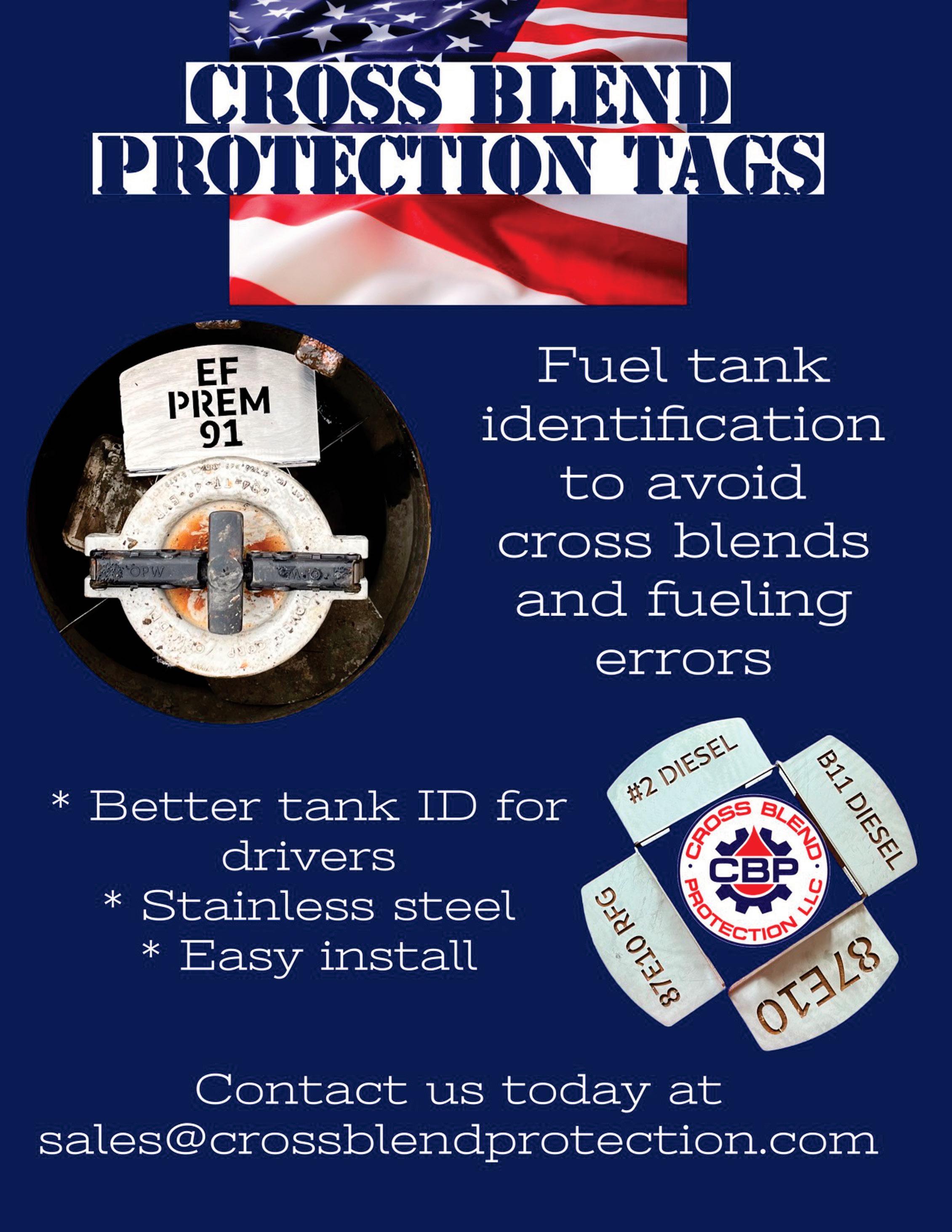
NACS State of the Industry Report of 2022 Data Is Now Available
The NACS State of the Industry Report of 2022 Data is available for purchase. This invaluable report is the only convenience industry-specific benchmarking snapshot that keeps convenience retailers one step ahead with data and analysis that saves time and money. Get a behindthe-scenes look at aggregate competitor data in critical areas, including financials, store operations, merchandising, foodservice, fuels and more.
Today’s dynamic landscape requires agility and a balance of efficiency and effectiveness that can free up resources and fuel new growth. Success requires knowing when you must invest in technology and how to harness data to deliver targeted, personalized offerings and customer experiences.
This report will help operators:
• Understand the big picture with data and analysis on economic, market and shopper dynamics.
• Maximize effectiveness and profitability with insider access to aggregate financial, operational and category data from more than 27,000 convenience stores across the United States.
• Benchmark against top performers in the industry and determine key drivers to their success.
Upon purchase of a digital license (list price: $399.00, NACS member price: $289), you will receive immediate access to the report. The report link will be available under MyNACS - My Purchased Content. Order today at https://www.convenience.org/Solutions/Store/ Products/NACS-SOI-Report-Compensation-2022-Data
Calendar of Events
JULY
NACS Financial Leadership Program at Wharton
July 16-21 | The Wharton School | University of Pennsylvania | Philadelphia, Pennsylvania
NACS Marketing Leadership Program at Kellogg
July 23-28 | Kellogg School of Management | Northwestern University | Evanston, Illinois
NACS Executive Leadership Program at Cornell
July 30-August 03 | Dyson School | Cornell University | Ithaca, New York
OCTOBER
NACS Advanced Category Management Certification Course
October 03 | Georgia World Congress Center | Atlanta, Georgia
NACS Food Safety Forum
October 03 | Georgia World Congress Center | Atlanta, Georgia
NACS SHOW
October 03-06 | Georgia World Congress Center | Atlanta, Georgia
NOVEMBER
NACS Innovation Leadership Program at MIT
November 05-10 | MIT Sloan School of Management | Cambridge, Massachusetts
NACS Women’s Leadership Program at Yale
November 12-17 | Yale School of Management | New Haven, Connecticut
of 2022 Data
a full listing of events and information
FuelsMarketNews.com 6 | FMN Magazine SUMMER 2023
For
visit www.convenience.org/events.
Convenience Matters—Your Source for All Things Convenience

Do you want to keep up with industry happenings while on the go? Convenience Matters is a weekly conversation about what’s new and exciting in convenience stores and what the future holds for this forward-thinking and innovative industry. From global leaders to retail and fueling experts, to celebrities and convenience store fanatics, our guests share ideas and unique perspectives on a range of issues and topics.
Like a convenience store, there’s something for everyone in each episode of Convenience Matters!
Here’s a sample of the latest episodes:
C-STORE SALES TRENDS ACROSS THE GLOBE IN 2022 (EPISODE 385)
There are more than one million convenience stores across the globe. This episode takes a look at sales trends in 2022 across five global regions and the underlying causes.
With guest Jason Zelinski, client director, convenience and growth accounts, NIQ.
WHOLESALE
WHAT’S CERTAIN ABOUT CURRENT ECONOMIC UNCERTAINTY (EPISODE 387)
In 2022, inflation was at a 40-year high, gasoline prices were climbing and both the supply chain and labor market were a mess. The climate has improved, but for how long? What will today’s economic indicators mean for convenience store operators in 2023?

With guest John Benson, partner, AlixPartners, featured speaker at 2023 NACS State of the Industry Summit.
THE LAST TO CLOSE AND FIRST TO OPEN (EPISODE 388)
When hurricanes strike, convenience stores are often the last to close before the storm—and the first to reopen. It’s during these tough times that c-stores truly show how they support the communities they serve during and after times of crisis.
With guest Al Herbert, reporter/news producer KADN TV, NACS Gas Station Gourmet columnist.
Business Software for Fuel Marketers of All Sizes
Call (310) 214-3118 to schedule your one-on-one demo today or email sales@triniumtech.com www.TriniumTech.com/Fuel
has enabled us to upgrade our technology to a more modern and functional system, while providing us the necessary flexibility to customize the system to fit our specific needs." Dave Olson,
Ernie’s Fueling Network www.erniesfuelingnetwork.com Fuel Software
“Trinium
Partner
LUBRICANTS CARDLOCK MANAGEMENT INTEGRATED ACCOUNTING
FUEL &
What’s In a Name?
The Fuels Institute Becomes the Transportation Energy Institute
 BY KEITH REID
BY KEITH REID
Alot has changed since the Fuels Institute was founded a decade ago. We are in a period where there is an intense focus on carbon reduction and vehicle electrification in the transportation sector. The Biden administration is in the midst of a huge push to ramp up access to EV charging infrastructure throughout the United States. Similarly, the conventional petroleum industry is working to diversify its refining to include new products like renewable diesel and to reduce carbon emissions from its processes. Biofuel producers are ramping up alternative solutions that are on their way to a net-zero carbon capability.
While these developments fill the news cycle, they are not driving the organization’s decision to change its name to the Transportation Energy Institute The energy environment we see today was becoming established when the institute was founded, and the institute’s efforts have reflected this from the beginning. However, with so much in flux today in energy policy and so many audiences looking to understand the energy and fueling landscape, the previous name could be confusing.
The Fuels Institute was founded by NACS in 2013 as a 501(c)(4) nonprofit social welfare organization. It publishes fact-based research projects designed to answer relevant market questions. It does not act as an advocacy organization, but it does work to educate policymakers and others on the impact of various transportation energy policies and on alternatives that might be optimal for meeting stated policy goals.
The credibility of the institute and its research is essential in what is an increasingly politicized and polarized world. Similarly, open minds are easier to educate than ones that are prematurely closed.
“Our board was running into people who just automatically assumed we were an oil lobbyist, rather than a nonprofit, objective research organization,” said
John Eichberger, Transportation Energy Institute executive director. “When we talk to people we can explain it, but when we send a report to Capitol Hill or to a state legislature, they’re going to see ‘fuels.’ And if they have that perception, and if they’re not looking for petroleum solutions, they’re going to discount it.”
The institute’s board began discussing a possible name change that might add more clarity to the focus of its mission almost two years ago. Staff conducted market studies and research and offered several options, of which Transportation Energy Institute was fully embraced. Having “institute” in the title solidified the connection to the previous decade’s research history. The NACS board similarly approved.
Some informal discussions of the new name with key outside stakeholders and others important to the institute and its mission indicated it was a move in the right direction. “There’s nobody we checked with—and that was a lot of people—who thought this was a bad idea. Everybody thought this was the right move at the right time,” said Eichberger.
As a non-advocacy group, the focus of the institute is to bring together a range of stakeholders from industry through government to help analyze the requirements to meet proposed and stated transportation goals, such as carbon reduction or increased efficiency, and to develop policies and solutions that are optimal to meet the goal.
These stakeholders include representatives from all aspects of the fuels and energy side (producers, marketers, retailers), automakers, government
FuelsMarketNews.com 8 | FMN Magazine SUMMER 2023
agencies and environmental groups. Research is developed from consensus and the results are not tweaked to provide a specific outcome.
“We believe that this is a tremendous opportunity for us to reach those who don’t know us or who dismissed us previously because they didn’t understand what we do,” Eichberger said. “And once they find out that we have a 10-year history of research and a track record of being objective, that’s really going to strengthen their introduction to the new brand.”
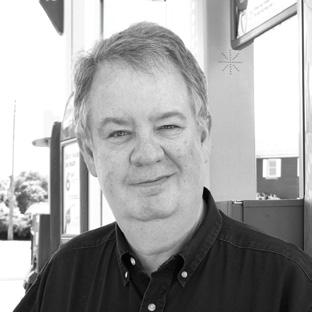
Anyone who followed the institute and its research would understand it never served as a front for the petroleum industry—or any other specific fuel or energy sector.
The first published report was “Tomorrow’s Vehicles—What Will We Drive in 2023?” This was an overview of the full range (at the time) of conventional and alternative fuels and electric vehicles. It accurately predicted a global vehicle fleet in 2023 still dominated by internal combustion engines and one still centered on petroleum-based fuels, though with a
range of alternatives making inroads, including EVs.
Most of the reports that followed were focused on exploring economic and operational issues with the range of alternative fuels and, in later years, EV charging. This reflects the reality that whether you have “fuels” or “energy” in the name, the transportation infrastructure is and will likely continue to be diverse for the foreseeable future.
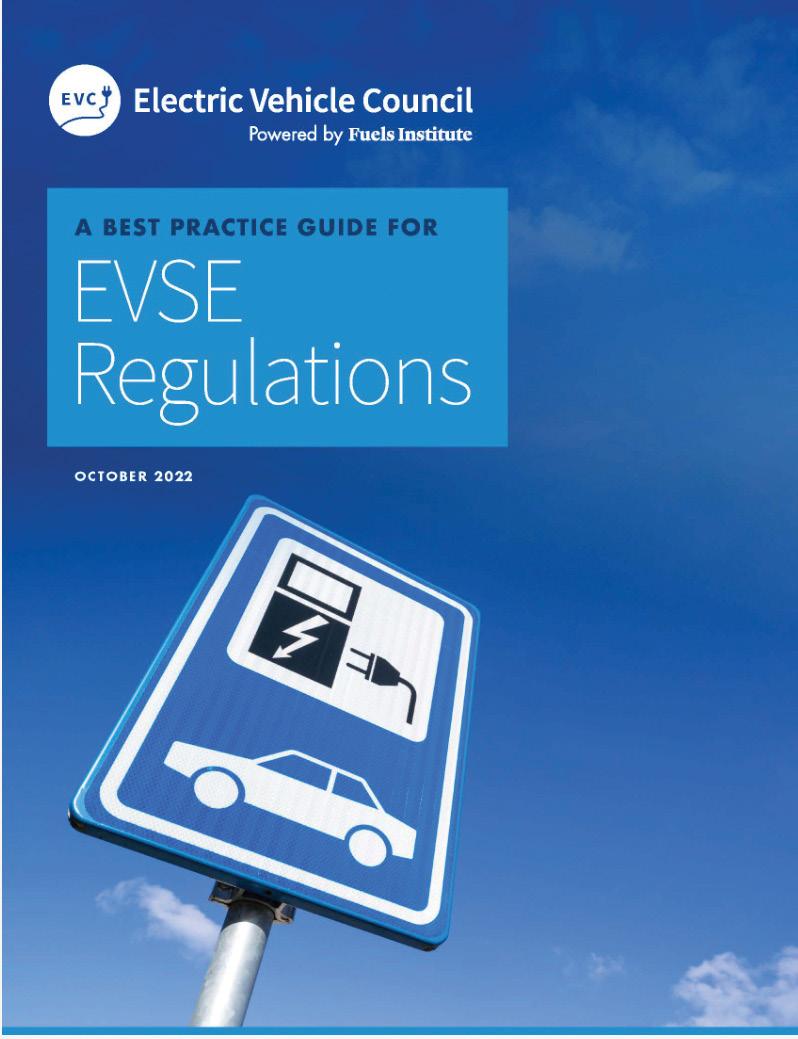
“If the global objective is to reduce carbon emissions, we believe that to be effective you need multiple solutions,” Eichberger said. “You need electric vehicles, absolutely. They play a huge role. But the conversion to new vehicle technology will take a very long time. And during that transition—even if it gets to 100%, which is not assured— the combustion vehicles on the road are still emitting carbon into the atmosphere. So, while we bring these new technologies online, whether it be electric, fuel cell or whatever, we must address the existing vehicle pool to get the greatest carbon emissions reduction as fast and affordably as possible.”

Our board was running into people who just automatically assumed we were an oil lobbyist, rather than a nonprofit objective research organization.”
FuelsMarketNews.com FMN Magazine SUMMER 2023 | 9
Keith Reid is editor-in-chief of Fuels Market News. He can be reached at kreid@fmnweb.com
Loyalty Knows No Bounds? Regional Brands Test the Waters
BY JOE O’BRIEN
Although a pre-pandemic report from GasBuddy indicated most consumers are not loyal to a particular fuel or convenience store brand, a steady drumbeat toward personalized customer experiences at quick one-stop-shop destinations may be changing the situation. And many strong regional brands are poised to take advantage of this as they pursue growth outside of their current footprint.
Most major c-store companies have announced plans to expand in number and territory. Michigan, for example, appears to be a coveted territory, with at least three regional retailers expanding there.
Chains that are expanding include:
• Buc-ee’s: Known for its sprawling stores, the chain has been a staple in Texas. It first expanded outside the state in 2019 and is now building stores as far afield as Wisconsin, Missouri and Colorado.
• Kum & Go: Recently acquired by Maverik, Iowa-based Kum & Go is planning to open more than 50 stores in Michigan, plus locations in Utah and Idaho. A new menu will coincide with the expansion.
• Kwik Trip: This retailer is growing its footprint in Iowa, Minnesota, Wisconsin, Michigan, Illinois and South Dakota.
• Murphy USA: Already operating c-stores and gas stations in 27 states, the company has announced plans to build at least 500 new stores.
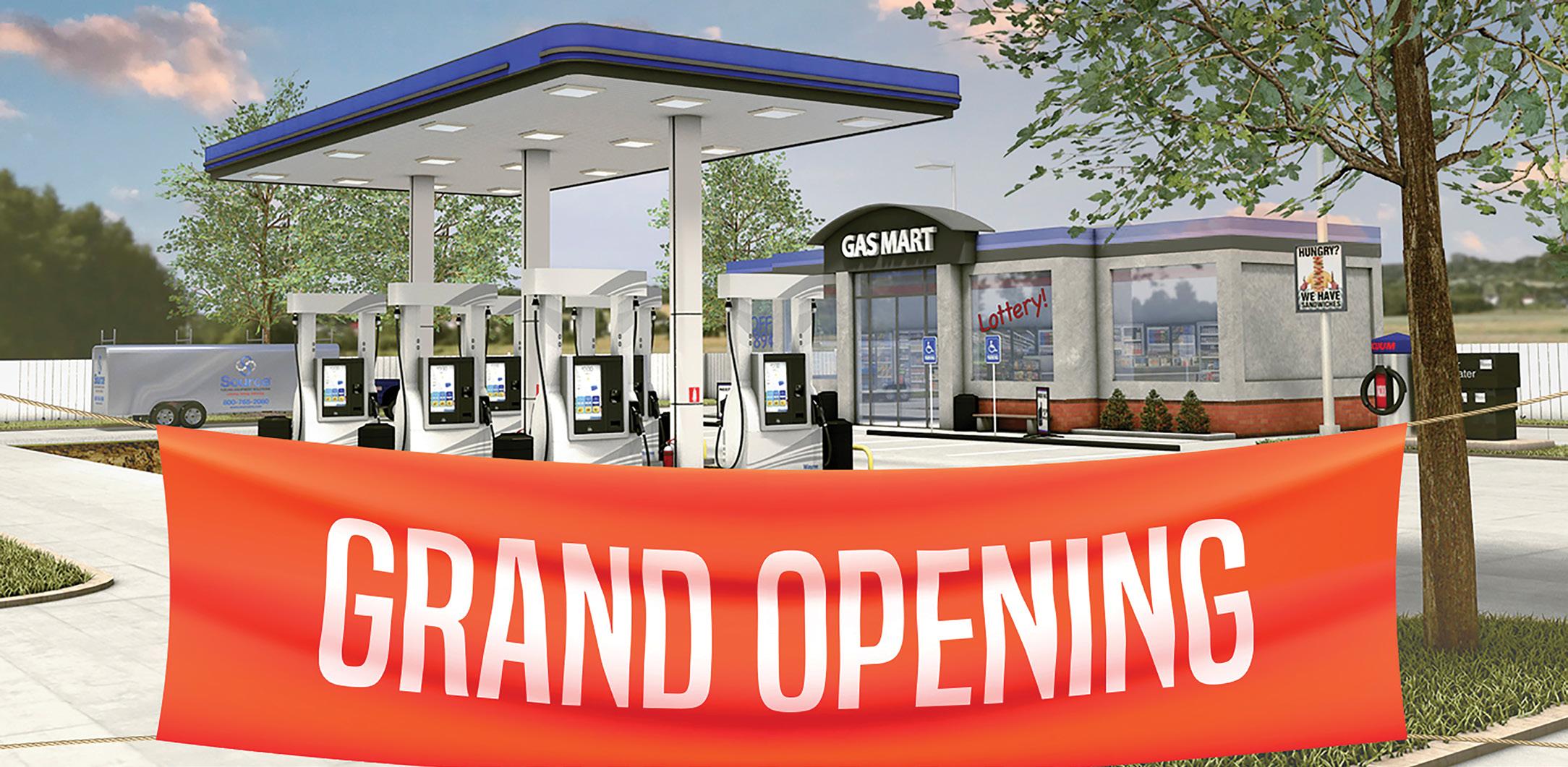
• QuikTrip: The Oklahoma-based retailer is reported to be expanding into the Chicago metropolitan area, Colorado, Tennessee, Arkansas, Alabama and Texas.
• RaceTrac: With existing locations in Alabama, Georgia, Florida, Kentucky, Louisiana, Mississippi, Texas and Tennessee, the company announced plans to open locations in Ohio and South Carolina.
• Royal Farms: This Mid-Atlantic chain is expanding into North Carolina.
• Sheetz: With stores in Pennsylvania, Ohio, Maryland, West Virginia, Virginia and North Carolina, the retailer announced plans to expand into Michigan.
• Wawa: This foodservice-prioritizing retailer is expanding into
FUELED FOR THOUGHT
FuelsMarketNews.com 10 | FMN Magazine SUMMER 2023
Convenience store customer loyalty around the country is being put to a new test.
Florida, Virginia, New Jersey and Pennsylvania, and scouting sites in Ohio, Kentucky and Indiana.
As of January 2023, there were 150,174 convenience stores operating in the United States, a 1.5% increase from the previous year. The number of convenience stores run by single-store operators also increased from the previous year, making up 60.2% of all convenience stores. This ownership trend is creating an opportunity for the regional chains, some of whom are targeting acquisitions from operations with just a few stores as part of their expansion strategy.
BECOMING A LOCAL FAVORITE
C-stores across the country are focusing their efforts on delivering personalized buying experiences tailored to the individual. Also worth keeping an eye on is to what extent extoling a sense of community will play in the success of the regional brands’ expansion tactics.
Consider this: Many of the expanding brands have long operated with great success as regional powers, often becoming synonymous with the culture and character of a particular part of the country.
But many of these regional c-store institutions are spreading into new states and communities, where they are newcomers taking on existing brands. When businesses have moved in to capture market share already dominated by local brands—take grocery stores, soda pop, chips and snacks, for example—people have sometimes rejected the newcomers to support their trusted favorites.
Some of the c-store brands are integrating charitable programs and partnerships into their operations to support the people in the new communities they serve. This can range from free coffee for first responders to designating their sites as safe places for youths in need. Larger sites could also be viewed as a welcome source of jobs
in locations where opportunities are scarce. These public relations aspects may turn out to be pivotal to the success of a regional brand’s long-term expansion strategy.
BRIDGING THE GAPS
Whether it’s the novelty of a gas station that doubles as a tourist destination, made-to-order food or take-home meals, a large inventory of pantry staples or a forecourt of fuel dispensers that stretch as far as the eye can see, the regional chains can fill a void in rural areas. Additionally, they may be in a stronger position to bring more alternative fueling capabilities and advanced user experiences to these areas due to their access to capital and capacity for leveraging efficiencies across a network.
And, although high-quality food is a hallmark of many of the regional brands’ strategies, at least one of them is pursuing a store design that does not include a kitchen. Instead, the chain favors an optimal traffic flow for customers and employees. Other tactics the big brands are using to fuel growth include non-fueling stores, self-distribution models and persuasive loyalty programs.
Regardless of what these strategies may yield for the regional brands, there are universal principles that convenience and fueling operations big and small must prioritize to succeed.
Above all, ensure the entire facility is as safe as it can be. This includes everything from effective traffic routing and fire prevention to designing facilities to prevent criminal activity through lighting and other deterrents. Clean, safe and modern forecourts help attract and retain customers.
Next, don’t underestimate the impact of exceptional, friendly service—especially in a time when the tide is turning toward self-serve customer experiences. In the end, this may turn out to be the most powerful differentiator of all.

Ensure the entire facility is as safe as it can be. This includes everything from effective traffic routing and fire prevention to designing facilities to prevent criminal activity through lighting and other deterrents.
FuelsMarketNews.com FMN Magazine SUMMER 2023 | 11
Joe O’Brien is vice president of marketing at Source North America Corporation. He has more than 25 years of experience in the petroleum equipment fuel industry. Contact him at jobrien@sourcena.com or visit sourcena. com to learn more.
Listen to the Real Experts
UST service techs provide unfiltered advice that will save you money.
BY BEN THOMAS
As a UST owner and operator, I know that the long-term durability of underground storage tank (UST) systems is fundamentally dependent on the professionals who service them.

I’ve always paid close attention to what UST service technicians have to say. Back in the mid-1980s, when I was climbing into tank pits and watched leaking tanks get yanked out of the ground, I found myself learning a lot from technicians about what does and does not work at UST sites. Service techs are often correct about important
fix-it things, largely because they have extensive field experience and practical troubleshooting skills. I’ve also found them to be very passionate about their skill set and vocation.
With today’s complex fueling systems, service techs are literally the ones who keep gas stations, fleet operations and emergency power generation systems running smoothly.
Recently, I asked my network of UST service providers around the country for some insight into what they think are the most important things UST owners and operators need to know.
Here’s how 15 individuals responded.
AT THE TANK PAD
• Daily walkthrough . “Walk around the station once a day and just look at everything.”
• Correct fill lids. “Keep spill buckets properly color coded to prevent cross drops. We go to sites at times and it’s hard for us to figure out what’s what.”
• Watch that drain . “Using the drain valve is convenient to remove fuel and water, but this is very hard on drop tubes over time because of introducing moisture between the drop tube and riser. Then a simple compliance check fails because the drop tube is rusted shut.”
• E-stop. “Know your emergency stop locations. Knowing how to reset tripped is a big one.”
• No sticks in the fill pipe. “Always look in your fills to see if the drop
RETAIL OPERATIONS
FuelsMarketNews.com 12 | FMN Magazine SUMMER 2023
tube is completely clear of any tank sticks and that no damage is present.”
IN THE BACK ROOM
• Don’t block the tank gauge “Keeping electrical panels and ATGs accessible for us to help in the event of a repair really does save time. When we have to move an entire backroom worth of products, that adds to time on-site, which the customer is paying for.”
• Act on alarms. “Address sump sensor alarms immediately. If I had a nickel for every time I checked the alarm history to find out it’s been going on for months, I’d be a very wealthy man.”
• Know your ATG location . “Make sure the tank monitor is not installed where no one can see or hear it. Don’t ignore it. Use it, but still stick those tanks regularly.”
• L [liquid sensor], T [tank] and Q [PLDD] alarms. “Know what L alarms are on Veeder Root, and where that sensor might be, and what T and Q alarms are.”
GENERAL OPERATIONS
• Fill your tank . “Don’t run the tank low, unless you enjoy buying motors.”
• Know your store. “THIS IS SERIOUS BUSINESS. Operating a fuel system is nothing to take lightly. Familiarize yourself with the fueling equipment so you don’t have to call me out to push a reset button.”
• Train . “Train your clerks on the system with C training. Train A and B operators on the components and their location.”
• Watch for rust . “Take corrosion seriously.”
• Beware of shop vacuums. “A shop vacuum is not how you remove liquid from a sump or spill bucket.”
• Good service tips. “Have
underground equipment anti-corrosion treated. Keep sumps dry, create an SOP for regular sump inspections and spray everything down with WD-40 during inspection. Make sure junction boxes have been serviced properly and keep the seals fresh.”
SUMPS, SUMPS, SUMPS
• Keep them tight . “If there is a submersible turbine or dispenser sump that is constantly having to be pumped out, ask why? Replacement of entry boots, lid gaskets and the like will probably be cheaper than constantly calling to have it pumped because it’s setting off the sump sensor.”
• Keep them dry. “Keep your sumps clean of water or product and do a pump test daily to see if everything is still flowing properly.”
• Remove water ASAP. “Don’t put off calling to have water removed from sumps. Invest the money in replacing bad sump lids and seals. Leaving liquid in a sump allows it to fill conduit runs, infiltrate seal packs and cause further damage down the line.”
• Be very careful with sump lids. “Make sure all your sump lids have handles and/or ways where hands do not need to be used to remove the lid. The lack of this is why I am a partial amputee.”
By paying attention to these field experts, you can save time, money and aggravation while preventing leaks. I’ll add, not all service providers are created equal. I’ve enjoyed knowing many service providers over the years who have a high level of expertise and a commitment to quality. However, if you suspect your service provider is providing substandard work, shop around and get referrals from other UST operators.
Ben Thomas is the president of UST Training. He has over three decades of UST industry experience, with networking and ideas to help owners and inspectors solve complex technical problems in the management of UST systems. Contact him at ben@usttraining.com

RETAIL OPERATIONS SONSART/SHUTTERSTOCK
“Address sump sensor alarms immediately. If I had a nickel for every time I checked the alarm history to find out it’s been going on for months, I’d be a very wealthy man.”
FuelsMarketNews.com FMN Magazine SUMMER 2023 | 13
Tunnel Vision
In-bay and tunnel wash systems offer operators two paths to enter the growing car wash business.
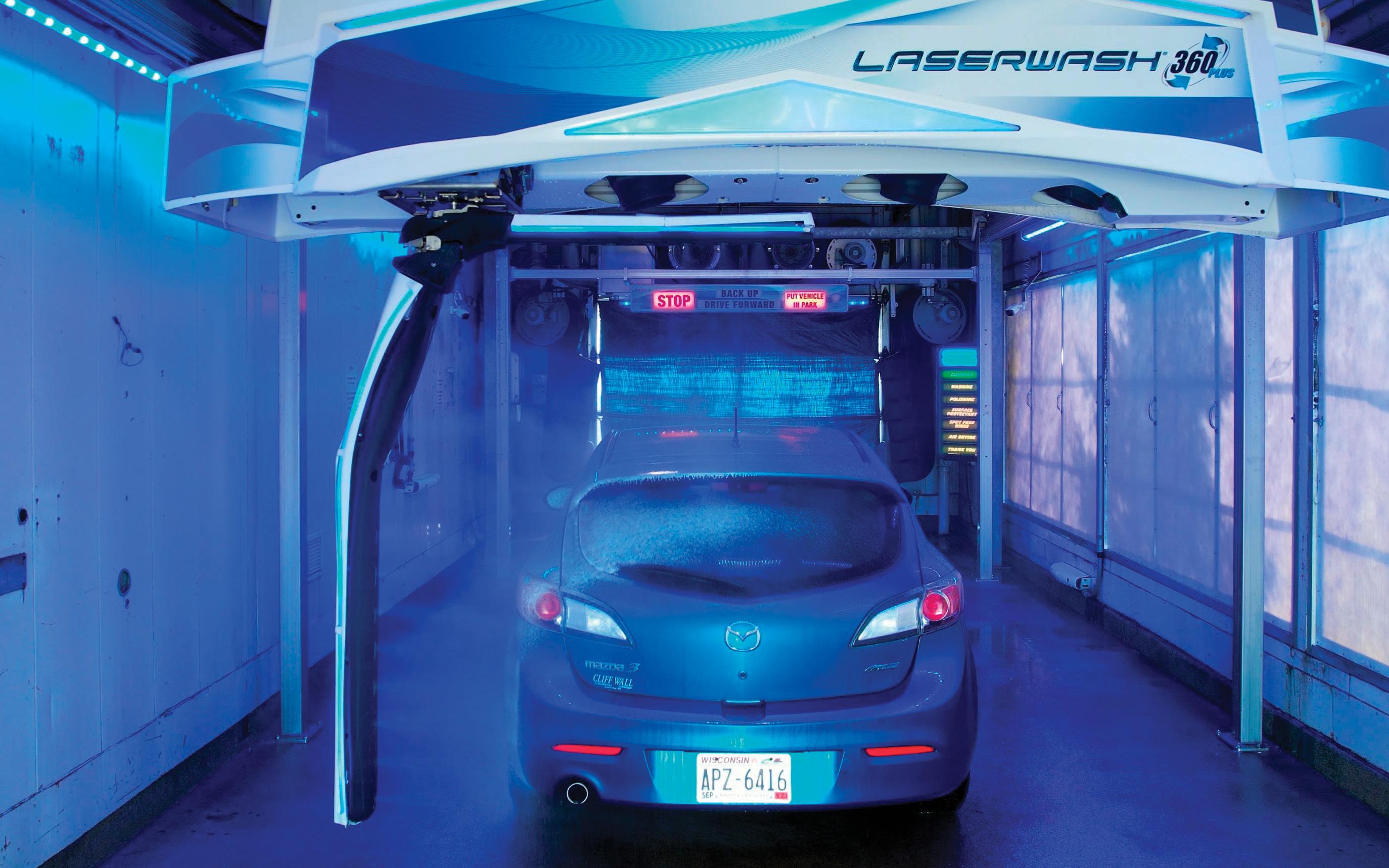 BY MARK TENTIS
BY MARK TENTIS
Clean vehicles aren’t going out of style any time soon. As the supply chain rebounds, more vehicles are entering the fray, which is expected to increase the demand for car wash services now and well into the future.
A new report from Transparency Market Research notes that the global car wash market will continue to grow substantially, which will put more vehicles on the road and into the hands of owners. But owners are also understanding the importance of keeping their vehicles in prime condition for longevity and resale value, according to the report.
Those factors will push steady growth in the car wash market, according to the report, and thus current and
future car wash owners have plenty of factors to consider. Among them is the decision on what type of car wash will help them achieve their goals—in-bay or tunnel.
Both options leave operators will plenty to consider, especially when maximizing the customer experience and financial returns.
A CLOSER LOOK
In-bay car washes house all the cleaning equipment in a single, compact structure. The vehicle pulls into the bay and remains stationary while the wash machinery shifts and rotates around it to provide varying amounts of cleaning solutions, depending on the options the customer selected. In-bays can either use touchless or soft-touch
(cloths or brushes) wash solutions.
Tunnel car washes are elongated structures that pull a vehicle along a conveyor or belt system. Different pieces of machinery are stationed along the tunnel and dispense cleaning solutions, the exact type dependent on the selected options from the customer.
Both options achieve the same end result—a clean vehicle and a satisfied customer. The difference is in the details.
THE FINER DETAILS
Footprint is an important consideration for operators when selecting a car wash. If space is an issue, in-bays work well as they feature a smaller, modular footprint compared with tunnel car washes. The smaller footprint makes it easier to establish an in-bay car wash on an existing or new site with space limitations. In terms of existing sites, in-bays can also be retrofitted seamlessly into an old repair bay or added onto an existing convenience store.
RETAIL OPERATIONS
FuelsMarketNews.com 14 | FMN Magazine SUMMER 2023
Tunnel car washes don’t have this type of flexibility regarding footprint. This option, however, benefits from its larger footprint in terms of car volume. While in-bay car washes can serve only one car at a time during a multiple-minute interval, tunnel car washes can clean several vehicles within the same time frame. It is not uncommon to see stagnant lines at in-bay washes during a peak period while the same volume passes through a tunnel wash within minutes.
Still, that’s not to say that one car wash option is more efficient than the other. Both options are efficient for different reasons. As stated earlier, tunnel car washes can handle a larger volume of vehicles in a given time frame than in-bay washes can. But tunnel car washes require a dedicated staff to operate, as well as more capital to initiate and operate. In turn, tunnel car washes can bring in more revenue with each vehicle they serve.
In-bay washes have a lower cost of ownership, typically using less water, electricity and wash detergents and waxes than their tunnel counterparts. The smaller footprint plays a major role in this, as an in-bay wash does not have the same water, electricity and detergent demands as tunnel options.
Another cost consideration is staff. In-bay washes do not require attendants, allowing customers to make their selections, pay and go through the wash without assistance. Further, customers can access them at any time. In-bay operators also don’t have to worry about the added responsibility of managing their staff, which includes crafting their schedules and adjusting for when employees are unable to work or don’t show up for their shift.
Tunnel washes, however, need staff to function, sometimes as many as seven or more people at a time.
SHARED BENEFITS
While in-bay and tunnel car washes have their unique advantages, they also
share several benefits that suit operators well regardless of the one they select. Both options allow operators to equip them with varying wash levels, ranging from a basic wash with a single detergent to a premium option that uses multiple detergents, wax, repellent and even wheel cleaners.
These add-ons cost less than a dollar per wash but allow operators to charge an additional $2 or more. They provide the customer with an improved and memorable wash experience and give the operator a better return on investment.
The equipment can also be customized to the operator’s preference for in-bay and tunnel systems. Tunnels can be equipped with an array of softtouch and touchless technology, giving customers a blend of both. In-bays generally side with one of those technologies, both of which have their own share of benefits.
Soft-touch benefits include high throughput rates, upsell opportunities for an enhanced wash experience and the use of variable frequency drives, which are more reliable than hydraulic systems or programmable logic controllers and lead to less maintenance and downtime costs. On the touchless side, benefits include vehicle protection (no touch means no risk of anything on the car getting damaged), few mechanical components, continuous operation (even in colder climates) and lower cost of ownership.
With the car wash market expected to grow substantially in the coming years, current and future operators can cement their place in this thriving landscape. To be successful, operators have to offer their customers a wash experience that will keep them coming back time and time again. Depending on their needs, operators cannot go wrong by choosing an in-bay or tunnel system. Both options provide the framework for success that will last during the projected forthcoming growth and beyond.
Mark Tentis is the senior vice president for global sales and services of OPW Vehicle Wash Solutions. He can be reached at mark. tentis@opwvws.com . OPW Vehicle Wash Solutions consists of PDQ Manufacturing Inc ., Belanger Inc. , Innovative Control Systems (ICS) and Kesseltronics

RETAIL OPERATIONS OPW VEHICLE WASH SOLUTIONS
Footprint is an important consideration for operators when selecting a car wash. If space is an issue, in-bays work well as they feature a smaller, modular footprint compared with tunnel car washes.
FuelsMarketNews.com FMN Magazine SUMMER 2023 | 15
Keep the Dispensers Pumping
Wetstock management can help detect fuel flow issues.
BY TONY CAPUTO
One of the top customer complaints regarding the c-store fueling experience is slow-flowing fuel dispensers. Making use of a robust wetstock management program can remove some unknowns from your business and help you better detect and react to slowing dispenser flow rates.
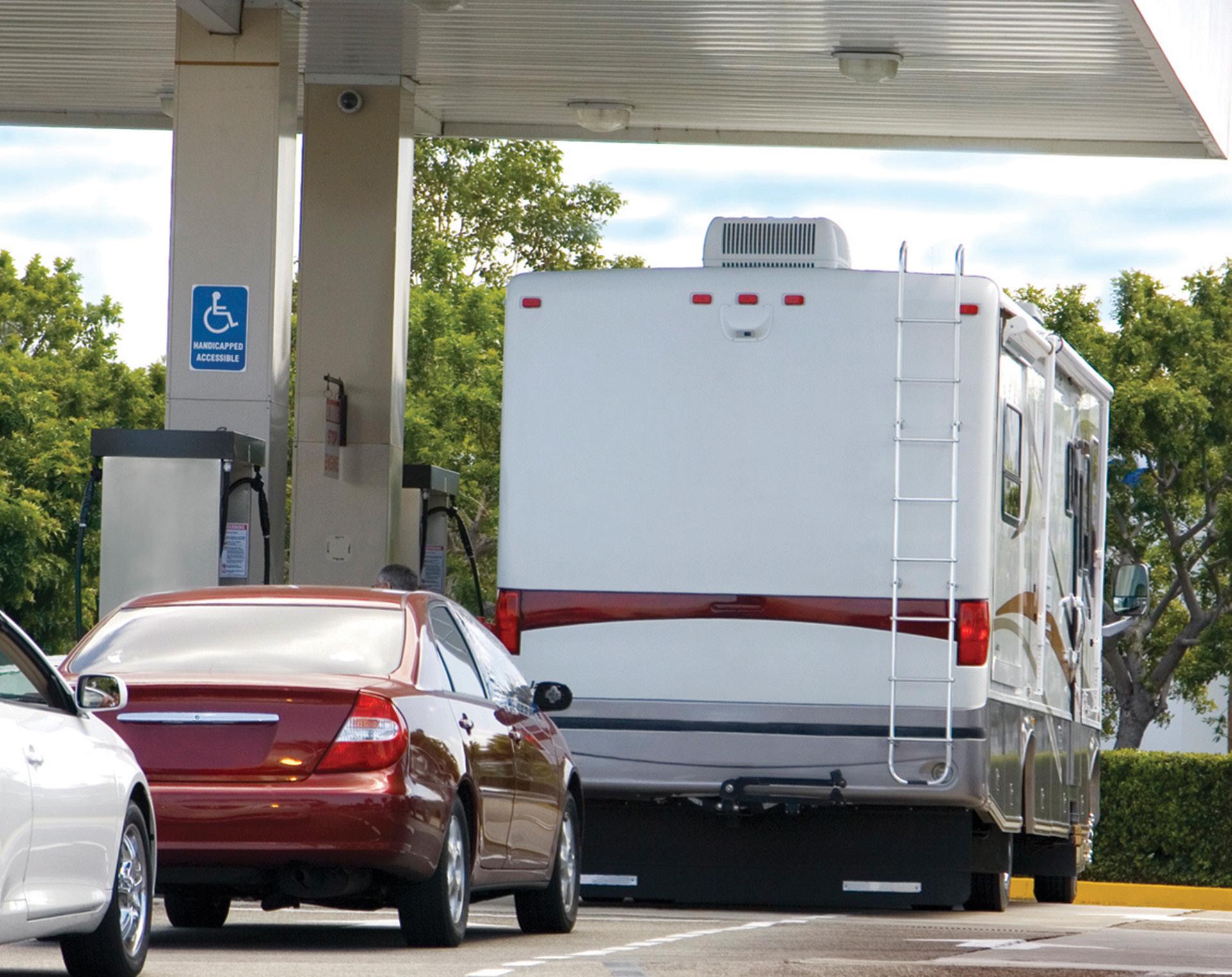
Extreme weather will often spark flow-rate problems, just as your customers are standing outside in unforgiving temperatures. Also, when customers are in a hurry (and who isn’t these days), they will immediately
notice underperforming fuel dispensers.
The risk with slow-flowing lanes is that the customer may not come back to your business. While the average transaction for a gas customer is 10 gallons, a slow-flowing truck diesel lane can cost you a 200-gallon sale. No customer is in a bigger hurry than a delivery driver! Over time, a single bad experience can cost you thousands of dollars in lost profit.
Some causes of slowing dispenser flow can be clogging fuel filters, defective nozzles, tripped line leak
detectors, water or sediment in the fuel and the performance of the tank motor (commonly referred to as an STP or submersible).
Complex motor arrangements, manifolded tanks or a lack of proper maintenance can also make detection and correction even more challenging. That is where a robust wetstock management application can help.
Here are some steps that you can take to maximize flow rate and keep your customers happy.
CONDUCT FREQUENT DISPENSER FLOW TESTS OR TRACK AUTOMATICALLY
There are many ways to test flow rate, either manually or through electronic means. Flow rate tests are often performed by third-party technicians when the location is not very busy. Other operators may ask their store managers to use stopwatches to time customer transactions … not an exact
RETAIL OPERATIONS
FuelsMarketNews.com 16 | FMN Magazine SUMMER 2023
science and prone to error, inaccuracy or paper whipping.
Wetstock management programs can help you take a more proactive approach to this science. These systems can help to identify declining flow rates before they become noticeable to the customer and to target the specific dispensers in need of investigation and maintenance. Often, when manual processes are used, the first reaction is to change the fuel filters at every dispenser for a certain grade. This is often not necessary and is costly to your operation. With a wetstock management program that can target dispensers of concern, money and time can be saved by only changing the dispensers suffering from slow flow.
KEEP RECORDS OF DISPENSER FLOW RATES
Without a wetstock management program in place, it is very challenging for maintenance personnel to track and keep up with dispenser flow rates. The collection of flow rates may happen only during periodic maintenance visits or annual meter calibration checks.
The recording of flow rates may be paper-based and difficult to read on the reports. Plus, the flow rates captured are based on one point in time. With the use of a wetstock management program, the collection of flow rates is constant. They can be tracked over time and reported upon via an online dashboard or other reporting tools. Many solution providers will also track flow rates over time and provide trend reports. This can help maintenance personnel detect anomalies outside of clogged fuel filters, leading to better detection of STP performance or tank contamination.
The optimal way to detect slowing flow at the dispenser is through a
wetstock diagnostic application where data is collected over time on dozens or hundreds of transactions and curated to remove unusual transactions. Curation of the data is a must for accurate flow rate detection, as unusual transactions can occur at any time. There are many solution providers on the market for such technology, providing you with accurate average- and max-flow rates by dispensing point.
WATCH FOR UNDERPERFORMING SUBMERSIBLES OR TANK MANIFOLDS
The most serious and costly issue with slowing flow is when it is related to underground submersible pumps or defective tank manifolding. Usually, all other causes of slow flow are investigated before addressing these more serious issues, taking up precious time and running up your maintenance costs.
Only a well-trained technician can address these issues. However, the use of wetstock monitoring applications may provide you with additional troubleshooting tools, and in some cases, help desk assistance.
###
In summary, there are many ways to take a proactive approach to flow-rate monitoring. Fuel operators should have processes in place for the detection of flow rates and timelines for when filters and underground equipment need to be inspected and repaired. Any regular process where you remove the customer from the equation can result in quicker recognition of the issues at hand and proactive repair. Whether you use manual reporting processes or use an electronic monitoring solution, have the right protocols in place to expedite fixing flow rate issues at your fuel lanes.
Tony Caputo is the director of business development for Warren Rogers. Founded in 1979 by Dr. Warren Rogers, Warren Rogers Associates pioneered the development of statistical inventory reconciliation analysis (SIRA) and invented continual reconciliation analysis (CR).

RETAIL OPERATIONS MCCAIG/GETTY IMAGES
Without a wetstock management program in place, it is very challenging for maintenance personnel to track and keep up with dispenser flow rates.
FuelsMarketNews.com FMN Magazine SUMMER 2023 | 17
“Oh, Grandma! What Big Teeth You Have!”
It’s better to be the woodsman than what’s for dinner.
BY ROY STRASBURGER
In the original version of Little Red Riding Hood, the big bad wolf devours good old Red as he did her grandmother. It is only when the fearless woodsman comes around and kills the wolf, opening his stomach with his axe, that Red Riding Hood and her grandmother—who are miraculously still wholly intact—are freed.
To stretch a metaphor to its breaking point, the big bad wolf is alternative fuels and EV charging, grandma is
the petroleum fossil fuel business and Little Red Riding Hood represents your store sales.

Since you are reading this fine publication, you probably have something to do with the fuel industry. Presumably, the fossil fuel industry. You know that alternative fuels, and especially electric vehicles (EVs), are growing in popularity, and they’re going to eat (pardon the pun) into the petroleum market.
As Doug Haugh, former CEO of
Parkland, said in a recent Convenience Leaders Vision Group meeting about EV charging, no one is saying that EVs are not going to be significant, they are just arguing over the timeline.
In 2022, the percentage of new vehicles sold in the United States that were EVs was 5.7%. Once EVs made up more than 5% of new car sales in Norway, the most saturated EV market worldwide, the percentage started increasing dramatically. Norway hit the 5% mark in 2013, when 5.5% of new cars sold were EVs. In 2022, 79.3% of new cars sold in Norway were EVs.
In late 2021, the U.S. Congress passed the Infrastructure Investment and Jobs Act, which directed billions of dollars toward establishing an EV-charging network across the country as well as toward improvements to the national power grid to accommodate renewable energy. In late 2022, the Build Back Better Act provided
RETAIL OPERATIONS
FuelsMarketNews.com 18 | FMN Magazine SUMMER 2023
new subsidies for EVs. In April 2023, the EPA proposed new light vehicle emission standards, that, in essence, require that over 60% of new cars sold will be EVs by 2032. However you want to look at it, the EV market is gaining momentum.
Granted, there are still major challenges that need to be sorted out: The infrastructure bill did not give much direction as to how the current electricity grid is going to meet growing demand; there is the question of how we are going to produce enough electricity to charge all of those cars; demand charging and access are still huge issues; and, frankly, it remains to be seen whether you can actually legislate such a rapid acceptance of a product in a free market system.
I know as well as you do that internal combustion engines are going to be around for the next 20 or 30 years. The cars that we have now, and more than 90% of new cars being sold, are going to need gasoline to operate. The opportunity to make money selling petroleum products is going to remain for the foreseeable future. However, as the number of EVs goes up and ICE (internal combustion engine) vehicles are replaced by electric ones, the total gas gallons that are sold every year are going to go down, especially if you factor in higher fuel efficiency in the new ICE cars replacing the old ones. Fewer total gallons sold means that the average gallons sold per store is also going to go down.
Unless margins increase significantly, a retailer selling fewer gallons is going to be making less money. At some point, a gasoline site will hit
a point of diminishing returns and become economically unfeasible. The fuel operation at the site will close, pushing the remaining gallons to another site. The situation will repeat itself at other locations, meaning that there will be fewer and fewer retail sites selling gasoline until there are only two or three sites left per community to meet the needs of the remaining ICE vehicle operators. What are you going to do to hold onto your gallons for the foreseeable future and to maintain your business for the long term?
At the end of the day, it comes down to the customer experience and your operational excellence. You will need to provide an attractive retailing environment for your customers so that they will choose you over another gasoline retailer. That means that you need to have a visually pleasing store, a well-lit parking lot, the cleanest operation inside the store and outside on the forecourt, excellent customer service and a store stocked with products that your customers, and their friends, want to buy.
By providing the best retail experience, you will be able to keep your existing customers, attract the gasoline customers who are looking for an alternative to their closed location and encourage the customers who have switched to EVs to come to your store—even though they don’t need gasoline.
Stretching the metaphor all the way to the end here—you are the woodsman and operational excellence is your axe. You need to start grinding your blade now.
Roy Strasburger is the CEO of StrasGlobal. For 35 years StrasGlobal has been the choice of global oil brands, distressed assets managers, real-estate lenders and private investors seeking a complete, turnkey retail management solution.
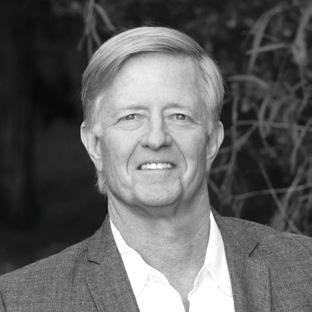
RETAIL OPERATIONS DELCARMAT/SHUTTERSTOCK
In April 2023, the EPA proposed new light vehicle emission standards, that, in essence, require that over 60% of new cars sold will be EVs by 2032.
FuelsMarketNews.com FMN Magazine SUMMER 2023 | 19
Trailer Maintenance Tips
A trailer is a high-cost piece of equipment, so take the time to take care of the investment.
BY TROY GEISLER AND LLOYD HAIR
Trailers trek thousands of miles during their service lives and encounter many challenges— from rocks and ruts to bumps and jolts, no trailer gets out unscathed. To get the most from trailers, here are some tips to prevent costly damage and keep your trailers in top shape.

• Start with the purchase
.
Minimizing trailer maintenance starts long before the load hits the road. To ensure long-term durability, choose units with high-strength steel. High-quality finishes are also important. A trailer with premium primer and topcoat finishes will look great for years to come and will, as a result, have a higher resale value.
• Understand load capacity. To minimize wear on components, such as brakes and tires, and to ensure safety, follow the right loading capacity for the trailer. This means getting a true idea of load concentrations as well as weight, speed and safety ratings. Manufacturers are great resources for providing a clear picture of each trailer’s true capacity.
• Conduct a pre-trip inspection
Before taking off with each load, inspect your trailer, checking that brakes and tires are in good condition. Also, ensure tires are properly inflated to the right PSI and confirm hydraulic hoses are free from cracks or damage. If you’re operating a
detachable or rear-load model, be sure to properly maintain hydraulic pressure even on self-contained and wet lines. A quick walk around the trailer to look at the frame, chains and straps for damage is a good idea as well. Trailers see a lot of use and abuse, particularly in harsher weather conditions, so repairs or replacements could be needed sooner rather than later.
• Keep hydraulic cylinders retracted . Hydraulic cylinders should be fully retracted when not in use to minimize the stainless-steel rams’ exposure to the elements and maximize their longevity.
• Lubricate. Keep wheel ends lubricated to minimize wear and prevent gear oil leakage. Well-lubricated wheel ends also ensure proper and safe operation. Brakes, cams and slack adjusters need to be lubricated also. In addition, use dielectric grease on lighting connections, electrical components, lights and lighting harnesses to reduce corrosion. Always refer to the manufacturer’s
FuelsMarketNews.com 20 | FMN Magazine SUMMER 2023
recommendations and grease guidelines.
• Maintain the tires. Traveling with underinflated tires is one of the biggest culprits of premature tire wear, so keeping them properly inflated will allow them to last longer while boosting fuel efficiency. Regularly check tire pressure and keep them properly inflated, either manually or with an automatic tire inflation system. Keep tire pressure equalized for the greatest longevity. It’s just as important to replace tires when they become worn to avoid a blowout and downtime. Always select the right size and rating to ensure optimal performance.
• Follow a preventive maintenance program . Developing a preventive maintenance program that aligns with an owner’s business needs will minimize breakdowns and optimize the longevity of trailers as well as their components. It also will enhance safety. Trailer fleet owners should match their equipment needs to a maintenance schedule. For example, will the trailer need to be on the road all the time or will it sit idle for long periods of time? One of the best ways to see a direct reflection of the success of your maintenance program is through the Commercial Vehicle Safety Alliance’s inspection program. The nonprofit organization
scores commercial motor vehicles based on inspection procedures and CVSA criteria.
• Keep a record . Proper record-keeping is also important, so you know when preventive maintenance is needed and what has already been done. This helps your operation optimize efficiency and prevent any small issues from becoming larger headaches down the road. Putting proper procedures in place will keep appropriate personnel accountable for performing the maintenance when needed.
• Conduct training. Trailer owners should ensure anyone involved with any aspect of using the trailer has proper training, not only to prevent damage to the trailer, but also for their own safety and the safety of others. In addition, ensure mechanics are well-trained on maintaining heavy-haul trailers and that they follow manufacturers’ guidelines.
• Communicate. Drivers and maintenance technicians should have open lines of communication regarding trailer issues or required maintenance. This will ensure the right kind of maintenance is performed and that it’s done in a timely manner. From fleets of five trailers to 50, proper selection, maintenance and preventive programs ensure the greatest longevity, safety and performance of each unit.
Troy Geisler is the vice president of sales and marketing for Talbert Manufacturing. Talbert’s trailers and equipment are used in applications as diverse as renewable energy, aerospace and heavy construction. More information: sales@talbertmfg. com ; www.talbertmfg.com
Lloyd Hair is the director of maintenance for Keen Transport, a heavy-haul logistic and transportation service provider. More information: www.keentransport.com

COMMERCIAL FUELS WENDELLANDCAROLYN/GETTY IMAGES
FuelsMarketNews.com FMN Magazine SUMMER 2023 | 21
Developing a preventive maintenance program that aligns with an owner’s business needs will minimize breakdowns and optimize the longevity of trailers as well as their components.
Communications Breakdown
Established behavioral techniques can improve business operations and the office environment.
BY JOHN KIMMEL
Has this ever happened to you? You were having a crucial conversation with your boss, a customer or someone else at the office. It could even have been with your spouse or one of your kids. The conversation was going well, and then you said something, and unexpectedly the atmosphere of the conversation took a turn for the worse. Maybe the person suddenly became angry or shut down emotionally. All the while you were standing there shocked, unaware of what you said to make them so upset.
Almost all of us have experienced a situation like the one above at some point in our lives, and some of us find ourselves in this quandary on a regular basis. Commonly, the trigger is not what you said to the other person, but rather the way you said it. We all communicate differently based on how we are wired. And because we communicate using different styles, we prefer to be communicated with in certain ways. Think of it as speaking the same language but in different dialects with individual nuances.
The good news is that there are only four different “behavioral languages” that we speak, and they can be easily learned. It is also easy to identify the behavioral language of the person you are communicating with, so that you can make those disastrous conversations a thing of the past.
During this series of three articles, I will tell you all about yourself and the people you know and love. I will reveal how you respond to different situations. I will uncover what your darkest fears are, what motivates you and what takes the wind out of your sails. I will even reveal blind spots that you may not realize are part of who you are, how you act and how others see you.
At this point, you might be thinking this sounds like some sort of magic trick. I can assure you that my methods are grounded in science. The data behind DISC was first uncovered in 1928, and researchers, psychologists, counselors and businesspeople have been refining that discovery ever since. It is an incredibly accurate communications tool that is not only useful, but is
FUEL MARKETERS
PART 1 OF 3 FuelsMarketNews.com 22 | FMN Magazine SUMMER 2023
fun, encouraging and verifiable.
Let’s start by identifying your style of behavior. DISC is about answering two important questions.
First, are you more outgoing or more reserved? That’s not asking if you are extroverted or introverted. Outgoing people are always ready for the next challenge or personal interaction. They move fast. Decisions come quickly and with little effort. They are like cobras, just waiting to strike. Reserved people are the opposite. They think and act more deliberately, weighing options and potential consequences. They believe that important decisions take time to research to achieve the most desirable outcome.
Now, are you more outgoing or more reserved? I realize that sometimes you are one way or the other—we all are. But which is the most dominant? By the way, one is not better than the other.
Now that you have determined if you are more outgoing or reserved, let’s move on to the second question. Are you more task-oriented or more people-oriented?
As with the first question, you might be saying, “Well, sometimes I am more focused on tasks, and sometimes I am more focused on people.” That is true of us all. If I am working on a spreadsheet, I am usually very task-oriented. But if I am playing with my grandson, I am more people-oriented. But, like the first question, which way do you lean?

If you are not sure, here is an example that will help you decide. Imagine you have a very important team project that must get done on time and on budget. Now imagine that your team gets the job done on time and on budget, but during the process, Bob quits and Susie gets upset. If you are the type of person who thinks, “I am sorry that Bob quit and Susie got upset, but we got the job done,” then you are likely more
task-oriented. However, if you think, “Well, we got the job done but it just wasn’t worth it because of the way it affected the staff,” then you are probably more people-oriented. So, which are you? Task or people?
Now let’s put your two answers together.
• The D personality style is outgoing and task-oriented. D stands for Dominant . Your style is the least common and only makes up about 15% of the population.
• The I personality style is outgoing and people-oriented. I stands for Inspiring. Your style makes up about 25% of the population.
• The S personality style is reserved and people-oriented. S stands for Supportive. Your style is the most common and makes up about 35% of the population.
• The C personality style is reserved and task-oriented. C stands for Cautious. Your style makes up about 25% of the population.
You have now taken the first step. You have identified your DISC style. During the rest of this series of articles, we will unpack your strengths and weaknesses. We will also learn how to quickly identify someone else’s style, and the language that they speak, so that you can effectively communicate with all of the style types.
Understanding and applying DISC will increase new sales and create more customer loyalty. Using DISC will improve the quality of new hires and help you determine if your current team members are in the best possible position for the organization to thrive. Simple awareness of DISC will also reduce a great deal of drama around the office, making it a more comfortable and productive work environment.
Envision an office where people get the job done and have fun doing it.
John J. Kimmel is the author of Selling with Power and has spoken at many state and regional petroleum marketer associations. Kimmel provides custom solutions to increase the effectiveness and profitability of sales teams for petroleum marketers all over the United States. To learn more, visit www.johnjkimmel.com
FUEL MARKETERS DRAFTER123//GETTY IMAGES
We all communicate differently based on how we are wired. And because we communicate using different styles, we prefer to be communicated with in certain ways.
FuelsMarketNews.com FMN Magazine SUMMER 2023 | 23
Ask yourself these seven questions to make sure your fuel quality program is working for you.

HOW TO IMPROVE
FuelsMarketNews.com 24 | FMN Magazine SUMMER 2023
FUEL QUALITY
AT COMMERCIAL SITES
By Peter J. Cochefski
New high-performance diesel engines are required to meet higher emissions and efficiency standards while also having a longer service life. These modern diesel engines require clean, high-quality fuel to operate properly, making them sensitive to fuel contamination.
It’s important to maintain fuel storage tanks with proper tank inspection and cleaning methods and procedures. A clean underground or aboveground fuel storage tank (UST/AST) ensures that clean fuel will always be ready for use by fleet vehicles, which reduces costs and the downtime associated with engine breakdown and repairs. But what must tank operators know about fuel quality and how to ensure it’s not compromised? There are seven questions you must be able to answer if you are a fleet operator or a marketer.
WHY IS FUEL QUALITY SO IMPORTANT?
Fuel represents approximately 60% of a truck fleet’s total operating costs.
With fuel prices increasing, the impact that fuel expenditures can have on a company’s bottom line is reason enough to prevent fuel from becoming contaminated. Poor fuel quality and the use of contaminated fuel can result in premature wear, engine failure or, at minimum, decreased engine performance that will reduce efficiency, leading to higher fuel consumption rates.
Unfortunately, the quality of today’s fuel has not kept up with the advances in engine technology. With the tight tolerances of vehicle fuel-injection systems and high-pressure fuel pumps, engines are susceptible to having their performance affected by the impurities that can be found in today’s fuel.
WHAT ARE THE COSTS OF LOW-QUALITY FUEL?
A clean fuel storage tank ensures that the highest quality of fuel is ready for use in company vehicles. Not only does high-quality fuel keep trucks on the road, but it also reduces the costs and downtime that can be associated with engine breakdown and repairs. A fleet that is plagued by breakdowns and idle trucks can have an immediate and overwhelmingly negative impact on the company’s bottom line. Water, microbial growth, corrosion, sunlight and high temperatures can all influence the speed of diesel fuel degradation, putting pressure on the fleet operator to ensure that only in-spec fuel is entering the fleet’s fuel tanks.
MY FUEL HAS BECOME CONTAMINATED ... NOW WHAT?
The most significant quality issue with today’s fuel is the intrusion of dirt and water into USTs and ASTs. Comprehensive sampling and site inspections are specifically designed to
FuelsMarketNews.com FMN Magazine SUMMER 2023 | 25
MAHC/SHUTTERSTOCK
analyze the condition of in-tank fuel based on a customized, predetermined set of customer specifications. It’s important to control and detect fuel contamination, whether it’s particulate, chemical or some level of water intrusion. Vehicle fuel systems can be damaged and rendered out of service if these contaminants are allowed to enter the system. Therefore, it’s best to deal with these contaminants before they are transferred to the vehicle’s fuel tanks.
Tank operators should not wait to clean tank bottoms until they are experiencing slow flows and frequent filter changes at the fuel island. As sludge accumulates in the UST/AST, it can become very dense or calcified. In these situations, the tank owner needs to have the tank physically cleaned by way of manned entry. This cleaning can cost the owner many thousands of dollars in expensive services and downtime. USTs and ASTs should be inspected and cleaned at least once annually to prevent the effects of water, particulate and microbial fuel contamination.
Fuel tank cleaning is a necessary component in a successful UST/AST management program and can be one of the most important things a fleet owner or operator can do to keep their fuel supply up to code and performing properly. Over time, repeated filling makes fuel storage tanks susceptible to the accumulation of particulates and moisture. Making sure that fuel tanks are properly cleaned and maintained will improve the vehicle’s fuel economy and result in longer engine component life. In addition to reducing the frequency that fuel filters will need to be changed, clean fuel prolongs fuel injector life, resulting in a more efficiently operating vehicle.
What this all comes down to is vehicle availability. When vehicles are not in the maintenance bay, they are at work. Less downtime means greater productivity.
HOW SIGNIFICANT A PROBLEM IS MICROBIAL CONTAMINATION?
While fuel quality can be impacted or compromised at any point along the distribution chain, the fueling site’s storage tanks are the last link in the supply chain before the fuel is introduced into a vehicle. They are also potentially the point at which the fuel sits the longest before being transferred or used.
A clean fuel storage tank ensures that the highest quality of fuel is ready for use in company vehicles. Not only does high-quality fuel keep trucks on the road, it reduces the costs and downtime that can be associated with engine breakdown and repairs. Idle trucks can have an immediate and overwhelmingly negative impact on the company’s bottom line.

When it comes to fuel storage, today’s more expansive range of fuel formulations presents many challenges for the tank operator. One of the most significant is that new fuels, such as ultra-low-sulfur diesel (ULSD), are more prone to experiencing contamination. Most contaminants are typically introduced into fuel during the transportation, delivery, mixing/blending or storage processes.
Water, which is the most common contaminant, may be introduced when moist air condenses on the fuel tank walls and condensation builds up within the tank, with this water working its way into the fuel mixture. Excessive levels of water can reduce the lubricating qualities of fuel, which can cause fuel injector seizure and engine damage, which will sideline the vehicle while costly repairs are performed. In addition, fungi and bacteria live in water. When these organisms enter a fuel system, they can affect sensitive rail injectors in diesel engines and plug fuel filters, reducing their life and causing premature wear, all of which affect life expectancy and overall on-road vehicle performance.
Particles of dirt, sediment and other solids have a similar effect on fuel injectors, causing them to wear out prematurely, leading to costly engine or fuel-system failures. Today’s high-pressure rail injectors, which are standard components on most heavy-duty, diesel-powered transport trucks, are especially vulnerable to clogging from contaminants.
FuelsMarketNews.com 26 | FMN Magazine SUMMER 2023
Conference: October 3-6, 2023
Expo: October 4-6, 2023

Georgia World Congress Center, Atlanta
BE PART OF A WINNING TEAM


“Nobody understands what I do, what I go through, what’s real for me like my peers. I get my best ideas at the NACS Show, and I feel like I belong to something bigger than my company. I’m part of a winning team.”


Join the thousands of attendees this fall in Atlanta for PEER TO-PEER LEARNING AND NETWORKING — share best practices, discuss challenges and so much more over four days!
part of the winning team and register today!
Explore and learn with the industry’s best and brightest
Be
nacsshow.com/winning
DO FILTERS REALLY MATTER?
Fuel dispenser filters are the last line of defense, the final opportunity to control fuel quality before any contamination is transferred into a vehicle’s fuel system. Dispenser filter design and function are fairly specific to the fuel type and require knowledge of the fuels being delivered and dispensed in order to ensure the most trouble-free engine operation.
There are several variables that can increase the frequency of filter plugging. A few of the most common are contaminant levels that have become problematic in the UST/AST; tank wall deterioration caused by age or misuse; microbial growth and microbe byproducts; recent use of a biocide without cleaning the tank; switching from regular fuel to an ethanol blend; and
WHAT ARE SOME TIPS TO IMPROVE FUEL QUALITY?
The best approach is to remember a tried-and-true saying: “An ounce of prevention is worth a pound of cure.” In other words, tank operators must be proactive when it comes to fuel quality. Waiting for a problem to occur before acting is a sure way to compromise the ability of your fleet to meet the needs of your clients. The most important preventive step is keeping the amount of water in storage tanks as low as possible, preferably zero. A proactive fuel-maintenance program that includes frequent fuel sampling, fuel polishing with microfilters and coalescers, and annual UST/AST tank cleaning is the most effective way to keep stored fuel clean and free of contaminants.
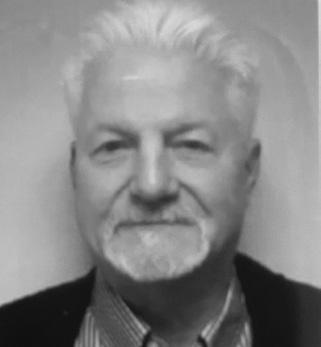
poor tank maintenance. If filters are plugging at a higher-than-expected rate, the contaminated fuel is that much closer to entering your vehicle fleet or the customer’s automobile, and that much closer to damaging your business’s reputation.
As part of a successful preventive maintenance program, filters should be changed whenever their flow rate dips below optimal levels. The National Conference on Weights and Measures, which sets standards that states may choose to adopt, allows a minimum of a 30-micron filter at the dispenser. Some fleets that operate their own fueling systems find fuel-related damage to vehicles from hard particles as small as four microns in size, suggesting that a 30-micron filter adds little protection to a modern diesel engine. This is likely due to the fact that Tier 3 and Tier 4 engines are typically equipped with 10-micron prefilters and two-micron fuel filters, so diesel fuel with particulates that exceed the ISO rating dispensed through a 30-micron filter places the burden of fuel protection squarely on the engine’s fuel filters. Also, overly restrictive filters can come with potential flow-related challenges that will need to be evaluated by each tank operator before a filter type is ultimately selected.
WHAT ARE THE BENEFITS OF CLEAN FUEL?
Developing and sticking to a proactive fuel-quality program is the best way for fuel suppliers and tank operators to keep their vehicles running and their clients happy. By committing to a program, tank operators can expect the following benefits:
• Decreased fuel costs
• Reduction in harmful emissions
• Decrease in microbial bacteria and fungus infestation
• Longer mean time between filter changes
• Increased service life for fuel systems and engines
• Reduced downtime and loss of income due to fewer fuel-related vehicle breakdowns
• Greater and quicker return on investment
Peter J. Cochefski is the director of Ryder Fuel Services, a subsidiary of Ryder System, Inc. He can be reached at (305) 676-2105, ext. 822, or Peter_Cochefski@ryder.com. For more information, please visit ryder.com.
Poor fuel quality and the use of contaminated fuel can result in premature wear, engine failure or, at minimum, decreased engine performance that will reduce efficiency, leading to higher fuel consumption rates.
FuelsMarketNews.com 28 | FMN Magazine SUMMER 2023

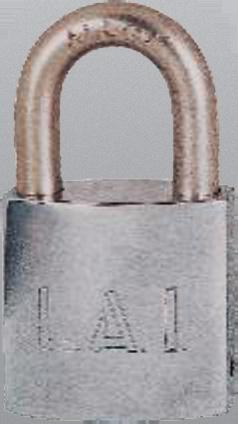

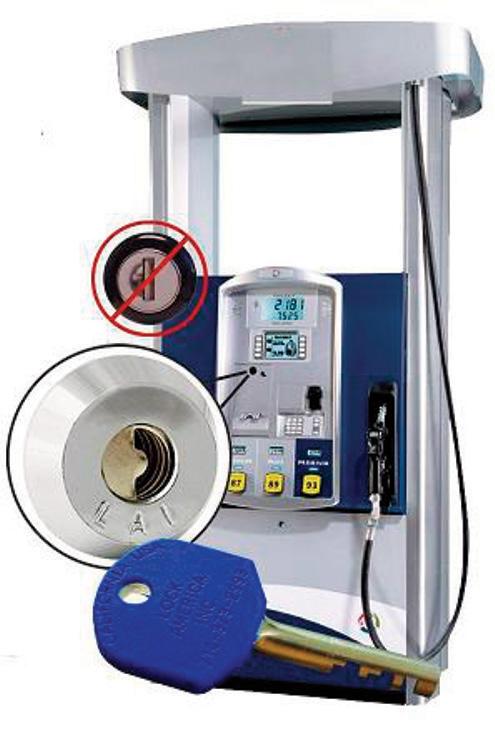
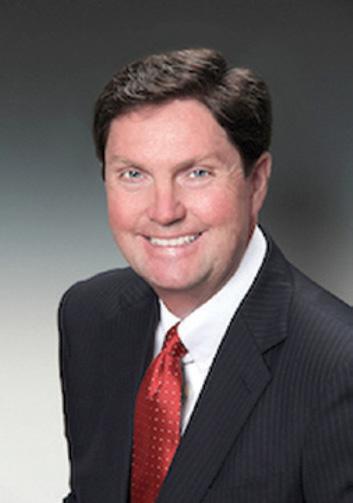


Florida Man Accused of Tampering with Gas Pumps and Stealing Fuel! Tampa, FL Thieves Steal $8,000 of Diesel Fuel! Spring, TX It’s Dangerous Out There! Secure Your Tanks & Pumps with Lock America High Security Lock Kits! • Replace your “universal” shipper locks with Lock America’s easy-to install kits. • Unique registered key code for each customer, with master key option. • Weather-resistant brass and stainless steel. Locks That Secure YourUndergroundTanksandPumps! www.laigroup.com sales@laigroup.com 800-422-2866 FRED M. WHITAKER, P.C. 2424S. E.BRISTOL STREET, SUITE 300, NEWPORT BEACH, CA (949)852-1800 FWHITAKER@CWLAWYERS.COM CUMMINSANDWHITE.COM More than 32 years of experience in P Mer Acquisitions, Real Estate, ent, Affairs, Estate & Tax Plann and Related Transactions
How Does Ethanol IN THE LEAD

FuelsMarketNews.com 30 | FMN Magazine SUMMER 2023
Does
Fit?
By Keith Reid
RON LAMBERTY SENIOR VICE PRESIDENT AMERICAN COALITION FOR ETHANOL
The American Coalition for Ethanol (ACE) is the nation’s grassroots ethanol advocacy organization, uniting ethanol producers, farmers, investors, cellulosic biofuel stakeholders and businesses. It advocates for public policies that support biofuels, develops new markets and infrastructure for ethanol and communicates the benefits of biofuels to policymakers, the media and the general public.
Ron Lamberty oversees ACE’s member and industry relations. He also directs ACE’s market development efforts, working with petroleum marketers to facilitate the use of ethanol nationwide.

He first worked in the industry in high school and college in a full-service gas station. He then worked for a convenience store chain starting in 1980, managing stations after he received his degree. He then worked for a jobber in South Dakota that also operated a number of c-stores and did ethanol blending, too. More than two decades ago he moved to ACE.
WHAT’S THE STATUS OF E85 TODAY AS A PRODUCT?
Well, in some parts of the country it’s grown like crazy—California primarily. They’ve gone from selling probably single digit millions of gallons of E85 around 2011 to where now they’re over 100 million gallons. Nationwide, if you break down what was sold in the U.S. last year, we’re probably somewhere in the neighborhood of 250 million gallons overall. There are twice as many E85 locations as E15 locations right now.
The downside is that the automakers still make some flex-fuel vehicles, but you’ve got to know how to ask for them because they don’t market them very aggressively. There are

Ethanol
FuelsMarketNews.com FMN Magazine SUMMER 2023 | 31
maybe 20 million flex-fuel vehicles on the road, even if nobody’s selling them aggressively anymore. And that’s still quite a bit more than we’ve got in the fleet as far as electrics go.
HOW STABLE IS THE ETHANOL PRICE?

If you’re a marketer—a blender who’s an obligated party—you have to turn that RIN in. And if you’re not, you can sell it. So, it’s kind of a rare instance where independent retailers and chains have an advantage over a refiner that I don’t think happens anywhere else in the industry. So the attractiveness from a wholesale standpoint is still there.
The feedstock that’s used to make ethanol tends to move with gas and oil prices. So it usually stays competitive.
HOW DOES ETHANOL FIT INTO A NET-ZERO FUTURE?
There are some fuels out there that are very low carbon right now and could go lower.
Obviously, we make more sense for some parts of the country where charging stations aren’t as available. And even if they were, they would be far apart because you’re in a rural area and places where winter impacts battery storage. There’s a product that we make that might work just as well or better in terms of lowering the emissions of a vehicle. We’re trying to put scientific data down to show that our product creates some alternatives to just a strictly electric car future.
We received some funds to do a study with the Department of Agriculture where they’re evaluating the practices farmers use and what that does for carbon. The ethanol plants have been doing all kinds of efficiency upgrades that have reduced their carbon scores. With carbon capture and sequestration, then you’re talking about situations where the ethanol score could go below zero. And they make ethanol out of the corn kernel fiber, instead of just the starch.
While an electric vehicle has zero tailpipe emissions, a battery is not a fuel source. The battery is a fuel tank, and the greenhouse gas emissions that accompany the charging of that fuel make a difference. If you’re in a part of the country where there’s still a high percentage of coal-fired electricity, or even natural gas, then you’ll have a carbon score that’s in line with a flex-fuel vehicle running on E85 today.
WHAT NEEDS TO BE DONE TO GET THE MESSAGE
ACROSS? FRANKLY, THE ETHANOL LOBBY’S NEVER BEEN SHY ABOUT PROMOTING ITS POLICY POSITIONS.
We don’t really fight against electric vehicles right now. I think most of the time, whether it’s media or Congress, they like to see a contest. And some of the people that helped us get the renewable fuel standard put together are the people who are pushing electric vehicles now. And you risk irritating people who would otherwise support us.
I do think it is a widespread feeling by people who support lower carbon that if they aren’t
PREVIOUS SPREAD: CHOKCHAI SILARUG/GETTY IMAGES; THIS PAGE: NICO DE PASQUALE PHOTOGRAPHY/GETTY IMAGES FuelsMarketNews.com 32 | FMN Magazine SUMMER 2023
“We’re trying to put scientific data down to show that our product creates some alternatives to just a strictly electric car future.”
singularly focused on battery-electric vehicles that they won’t happen or that they will happen too slowly. There’s just a resistance. It’s like they don’t even want to talk about other options.
WHAT ARE SOME OF THE ARGUMENTS IN FAVOR OF LIQUID FUEL THAT CAN BE MADE?
You’ve got nearly 300 million internal-combustion vehicles, and what could be done with those vehicles to improve the environment for the next 15 to 25 years, and the other side of that, too? And if you’re ignoring them because you want to promote EVs, then are you really trying to do what’s best for the environment?
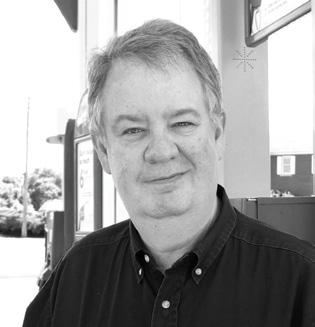
As we’re finding—and that may change now that some of the larger manufacturers are making them—the real concern is the price of the vehicles. They are too high for most people to even consider them. And even with big rebates, at some point they’re going to have to make those vehicles a lot less expensive.
We did our hybrid electric flex-fuel vehicle project where we converted a hybrid to be able to run
on E85. Here’s an option that gets you some of what you want, gets me some of what I want and gets us both closer to having less carbon in the air.
I’ve seen things that give me some hope that maybe there’s going to be reason, but at the same time then you hear bolder and bolder proclamations that we’re going to go faster in terms of EVs. In the past I’ve seen that the louder the claims get, the more it’s usually an indication that the thing they want, they’re not getting. So they’re asking for even more, which is a strange combination, but it’s something that’s been done over the years when you have a plan and there were pieces of it that you thought would work differently than they end up working.
HIGH 5 FOR HEROES
Every July 24 (24/7 Day), the NACS Foundation unites convenience stores across America in recognizing first responders, medical personnel and American Red Cross volunteers who work around the clock, 24/7, to serve our communities. Now in its fifth year, the event unifies the collective efforts of tens of thousands of convenience stores that honor and thank the extraordinary commitment of hometown heroes with items like a hot cup of coffee, cold beverage or a breakfast sandwich.
To learn more about participating, contact Stephanie Sikorski at ssikorski@convenience.org, or visit 247Day.org.

The American Red Cross name, emblem and copyrighted materials are being used with its permission, which in no way constitutes an endorsement, express or implied, of any product, service, company, opinion or political position. The American Red Cross logo is a registered trademark owned by The American National Red Cross. Should you require a receipt, please donate by calling 1-800-RED CROSS (1-800-733-2767), or give online at redcross.org
#247Day
#ConvenienceCares
Keith Reid is editor-in-chief of Fuels Market News. He can be reached at kreid@fmnweb.com
FuelsMarketNews.com 33 | FMN Magazine SUMMER 2023
By Keith Reid

FuelsMarketNews.com 34 | FMN Magazine SUMMER 2023
The renewable fuel has superior performance to the product it replaces.
RENEWABLE DIESEL
STARTS TO MAKE HEADWAY
It’s expected that alternative fuels provide superior carbon reduction over their petroleum counterparts. However, this typically comes with compromises such as lower energy intensity or a greater affinity for water contamination. An exception to the rule is renewable diesel, which is a drop-in replacement for petroleum diesel that improves on many significant performance factors with few compromises in return. It even meets the ASTM D975 specification for petroleum diesel.
Renewable diesel is typically made from the same range of feedstocks as biodiesel, including vegetable oils (soybean, for example) and animal fats. It currently favors waste sources. It is produced through conventional refining processes and existing petroleum refineries can be converted to renewable diesel production.
The Oregon Department of Environmental Quality notes that using renewable diesel can cut lifecycle greenhouse gas emissions up to 85%, depending on the feedstock. Argonne National Laboratory found that emissions for 100% biodiesel (B100) are 74% lower than those from petroleum diesel.
PRODUCT PERFORMANCE
In terms of performance, renewable diesel could be considered the ultimate diesel.

Using Neste MY Renewable Diesel’s product specification, it has a cetane number above 70, whereas neat biodiesel typically has a cetane number between 50 and 60. The cetane number of the allowed biodiesel blends are even lower, closer to petroleum diesel.
Cloud point, which indicates when fuel starts to be affected by cold temperatures, is as low as -40°F (-20°C) for winter grade and 10°F (-12°C) for summer grade, which is superior to both biodiesel and petroleum diesel. It should be noted that the performance factors are impacted by the specific feedstock.
“I’ve not seen another 100% renewable product that has the same properties as a regular diesel,” said Stephen Hightower, president of Hightowers Petroleum Co., a wholesale fuels provider working to expand renewable diesel nationally. “Here you’ve got a -15°F pour point on animal fats. When we start looking at some of these over-the-road vehicles in the northern Midwest states, with the clouding and and
FMN Magazine SUMMER 2023 | 35 FuelsMarketNews.com
gelling and clogging up your filters … well, that problem’s been resolved.”
One of the biggest performance enhancements is related to water contamination.
“It just repels water like crazy,” said Matt Leuck, technical manager, renewable road transportation at Neste, the world’s leading producer of sustainable aviation fuel and renewable diesel. “So, any water that does get into a tank is going to go straight to the bottom of the tank. If you
PRODUCT COST
The most significant downside that renewable diesel shares with other alternatives is a higher cost compared to its petroleum counterparts. Credits make the product viable in markets where some form of Low Carbon Fuels Standard (LCFS) has been implemented.

The Wall Street Journal noted that a producer of renewable diesel who sold it in California for the same price as petroleum diesel would have lost an estimated $3.88 a gallon in 2022 if not for government incentives averaging $4.59 a gallon.
For markets such as California, Oregon and Washington state where LCFS comes into play, and when combined with other federal or state credits that might be available, price to the customer is usually not an issue.
However, basic supply and demand then comes into play. Renewable diesel production is currently centered on the Gulf Coast refining hub, the West Coast and to some extent the Midwest. The production of renewable diesel is rapidly expanding, but then, so is the demand, as various low carbon programs ramp up, such as expanding fuel requirements to marine applications and new areas such as the Northeast moving toward similar programs.
maintain your good housekeeping practices, you’re not going to have water issues or microbial growth issues, either.”
Biofuels can have a range of handling issues. These tend to be minor and are most often linked to the “scouring” properties of the new fuel entering a traditional and well-used petroleum environment. Renewable diesel lacks those concerns.

“It is easier than biodiesel, and I’m a big fan of biodiesel,” said Mark Fitz, president of StarOilco, a full-service oil company with extensive experience in biofuels that serves the Portland, Oregon, area. “You drop it in, you can mix it with diesel—no worries. If you go to biodiesel, and you’ve always had diesel in your tank, it’s going to wash a bunch of stuff out your tank. When you move to R99, you will notice no difference.”
EIA data shows that the annual production of renewable diesel tripled between 2019 and 2022. It currently stands at 170,000 barrels per day, compared to the overall distillate production of roughly 4.7 million barrels per day. EIA anticipates that amount will double through 2025 as more production comes online. EIA notes that the West Coast could meet most of its distillate fuel needs from renewable diesel by 2025 if production forecasts pan out.
“With all the credits right now, it’s the same price as diesel, if you can get it,” said Fitz. “With all the new product coming online, it’s been wide open the last year at the same price as diesel. Does that last? I would predict we go back to something like a 10-cent premium.” He added that as California’s mandates expand, demand for renewable will increase, keeping the market tight.
“What we’re facing right now is price,” Hightower said. “But I think that’ll take care of itself as we get the volume coming and hopefully get the federal government to recognize that there’s a need for more support.” With the product’s great performance, it
PREVIOUS SPREAD: OTICKI/GETTY IMAGES; THIS PAGE: GETTY IMAGES FuelsMarketNews.com 36 | FMN Magazine SUMMER 2023
“I’ve not seen another 100% renewable product that has the same properties as a regular diesel.”
can still be viable in markets where price parity doesn’t exist, as long as the spread is not too great.
Because the product has near zero aromatics, it has much cleaner combustion, leading to less soot, carbon monoxide, NOx and far fewer injector deposit issues. DPF issues and regeneration requirements are also reduced. This can be very attractive to fleet operators looking at total cost of ownership.
“We have a customer called Titan Freight in Oregon,” said Leuck. “They’re very meticulous with their data, and they saw a minimum two cents per mile savings basically because they were reducing DPF maintenance and regeneration downtime. They were also extending oil change intervals and saving a ton of money. So, there’s tangible benefits on top of the greenhouse gas reductions. We don’t even have to run detergents in our fuel and we are still able to be Top Tier certified.”
Renewable diesel is a no-brainer for generator applications, even without credit support. The production process produces an oxygen-free fuel with high stability.

“Our fuel is very stable when you look at a diesel molecule,” Leuck said. “We made the first commercial runs of our fuel in 2005, and we still have some of that fuel set aside in drums in Finland. We test them randomly and so far it hasn’t changed.”
Generator operators, particularly those that require substantial gallons like at data centers, have little problem paying extra. Since current volumes are limited, pipeline shipments are inefficient with the transmix loss involved (there are also several regulatory hindrances that need to be addressed). That leaves rail or trucking.
“The bigest issue for us now is we have to rail it across the country,” said Hightower. “And then find appropriate storage in geographically convenient locations. Being somewhat of a first mover, you have different challenges than you will have in the future once it’s adopted and been commercialized financially.”
He noted that there are customers across the country that will pay the premium for the benefits the product provides. “We have some distributors that are 48-state capable that will take a tanker from California to the East Coast for a power generation application. Or take a tanker to the
Midwest for an OEM to do testing,” Hightower said.
There are some performance downsides. Energy density is an area where alternatives can come up short compared to their petroleum counterparts, and renewable diesel is no exception. However, the impact is minor, at 3-4%.
Lubricity can be an issue, but one solved through additization or blending with biodiesel (typically at a 5% level).
LEGISLATIVE HURDLES
The current push for net-zero carbon seems to be ignoring any solution that involves combustion, even if it can be developed to meet the same end goal. Renewable diesel is no exception. Its proponents are working to change that landscape.
“We’re trying to get a national standard that encompasses renewable diesel versus just the state standards,” Hightower said. “It’s almost required that we have some type of subsidy to be more competitive into the marketplace along with the fact that we also have a robust charging infrastructure program as well.”
Hightower is working to educate the Department of Energy, the Department of Transportation and the White House. “It’s just a matter of, you know, making it known, putting it in their minds that this product exists and that we’re here to help them reach their decarbonization goals.”
And, unlike other alternatives, renewable diesel is ready to go from a product, vehicle fleet and infrastructure standpoint.
“Our message right now is you could literally do this tomorrow,” Leuck said. “We call ourselves a today solution—you don’t even have to drain the fuel out of your tank that’s in there right now, much less install charging or a compressor or something else. Literally, just put a different liquid in your tank and you’re getting 75% greenhouse gas reduction overnight.”
Keith Reid is editor-in-chief of Fuels Market News. He can be reached at kreid@fmnweb. com

FMN Magazine SUMMER 2023 | 37 FuelsMarketNews.com

FuelsMarketNews.com 38 | FMN Magazine SUMMER 2023
By John Eichberger
ACHIEVING CARBON REDUCTIONS
STRATEGICALLY
The motivation behind many new policies is to dramatically reduce carbon emissions from transportation to mitigate the effects of climate change, but are these the most effective policies? Perhaps we should recognize that there are limitations to how quickly these efforts will reduce carbon emissions and begin to consider a more strategic approach that matches vehicle technologies with their energy sources. Could such a plan yield greater carbon reductions faster and at less cost? I think that is a conversation we need to have.
WHY?
Why are policymakers proceeding with bans and mandates designed to promote the technology of zero-emissions vehicles (ZEVs), typically defined as battery electric vehicles (BEV) and fuel cell electric vehicles, with BEVs expected to dominate in the light-duty vehicle sector during the timelines included in these policies? There
are a variety of reasons. First, transportation is responsible for up to one-third of carbon emissions in the U.S., and such policies take a direct approach to this leading source of emissions. Second, the tailpipe on a vehicle is a tangible source of emissions with which everyone can relate. Third, it comes across as definitive and actionable, demonstrating that leaders have identified the problem and are assertively pursuing a solution. But there is more involved in reducing carbon emissions than the optics of a policy.
HOW FAST?
Sales of BEVs in the U.S. may lag other countries, but they have shown great momentum and in first quarter of 2023 represented 6.9% of all light-duty vehicle sales, with approximately 50 different models available for purchase. And with most vehicle manufacturers investing heavily in their BEV production capacity, these numbers are almost certainly going to increase.
Another day, another policy announcement. Without doubt, the pursuit of carbon reductions has not lost any momentum.
ENVIROMANTIC/GETTY IMAGES
FuelsMarketNews.com FMN Magazine SUMMER 2023 | 39
Policies seeking to accelerate the transition of the transportation fleet to a new technology hope to capitalize on the lower emissions profile of these vehicles and ween the market off vehicles that rely mostly on fossil fuels for energy. However, these proposals seem to be ignoring the entrenched size of the legacy market. In the U.S. alone, there are nearly 300 million internal combustion engine vehicles (ICEVs) in operation and throughout the world the number is closer to 1.5 billion. A new vehicle technology will do nothing to mitigate emissions from these vehicles; only by addressing the carbon intensity of the fuel can we mitigate emissions from the existing ICEV fleet.
And even if the new policy were successful in converting 67% of new vehicle sales to BEV by 2032, that would leave more than 90% of the vehicles in operation still operating on liquid fuel. What will we do about those vehicles? An unfortunate consequence of policies that seek to eliminate specific technologies is that they send a signal to the market to stop working on those technologies. Without innovation in low-carbon fuel production to support ICEVs, efforts to mitigate carbon emissions will be significantly impeded. There must be a way to encourage new technology while supporting innovation in legacy systems that will remain in operation for decades.
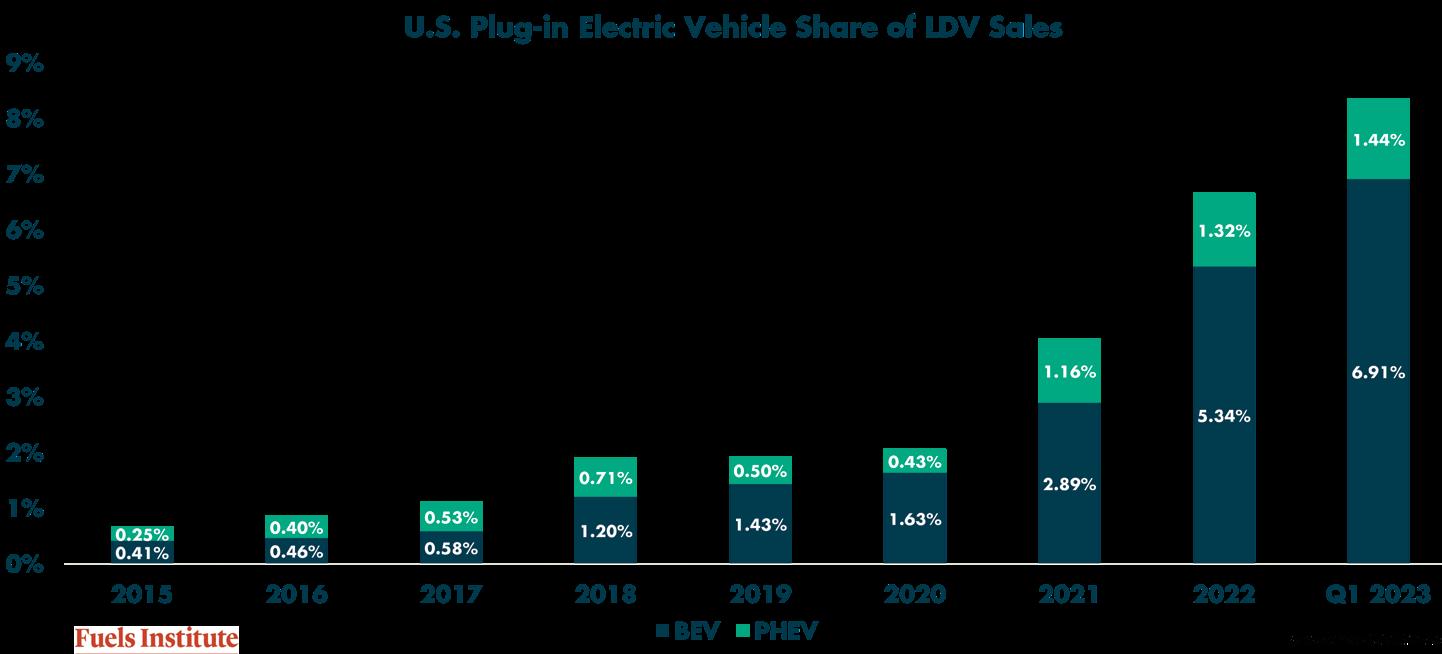
BUT ALSO …
ZEVs are not zero emissions. The absence of a tailpipe does not mean that there are no emissions associated with the vehicle. Yes, on average BEVs do emit less carbon over their lifetime than ICEVs—but manufacture of both vehicles and batteries plus the generation of electricity result in carbon emissions. The Transportation Energy Institute’s life cycle analysis report last year demonstrated that 72% of the life cycle emissions of a BEV come from the generation of electricity, and this fluctuates depending on how that electricity is generated, so where BEVs are operated makes a difference. This fact is often glossed over in these proposals because few constituents can personally relate to emissions from power plants,

FuelsMarketNews.com 40 | FMN Magazine SUMMER 2023
There must be a way to encourage new technology while supporting innovation in legacy systems that will remain in operation for decades.
so calling vehicles without tailpipes “zero emissions” is a message that resonates. Yet life cycle emissions must be a critical component of the discussion and must be included in a strategic approach to carbon reductions. In the U.S., electricity generation is responsible for 25% of carbon emissions, so shifting emissions from the tailpipe to the generating facility is not solving the overall carbon situation.

YET …
That said, there are some regions of the country that produce electricity with much less carbon than the national average. What if we were to develop a policy to encourage the distribution of BEVs to those markets where the carbon benefits would be greatest? In the map, the lighter the color, the less carbon emitted by the associated electricity generation system. The chart shows the impact of lower-carbon-intense grids on the life cycle emissions of a BEV verses an ICEV. It makes sense to rely on BEVs where they will yield the greatest benefit, and a strategic policy could provide incentives to encourage the distribution of BEVs to these regions.

FuelsMarketNews.com FMN Magazine SUMMER 2023 | 41
If new vehicles or energy options are not affordable, accessible and reliable, the end user will reject them, and we will never achieve the lofty ambitions with which these policies are introduced and supported.
FINALLY …
Any policies under consideration must think about affordability, accessibility and reliability. If new vehicles or energy options are not affordable, accessible and reliable, the end user will reject them, and we will never achieve the lofty ambitions with which these policies are introduced and supported. In general, consumers are responding favorably to EVs. In a recent Transportation Energy Institute survey (results to be released soon), 49% of Americans said they had a somewhat or very positive opinion about BEVs and 34% of those who might purchase a vehicle within two years would consider a BEV.
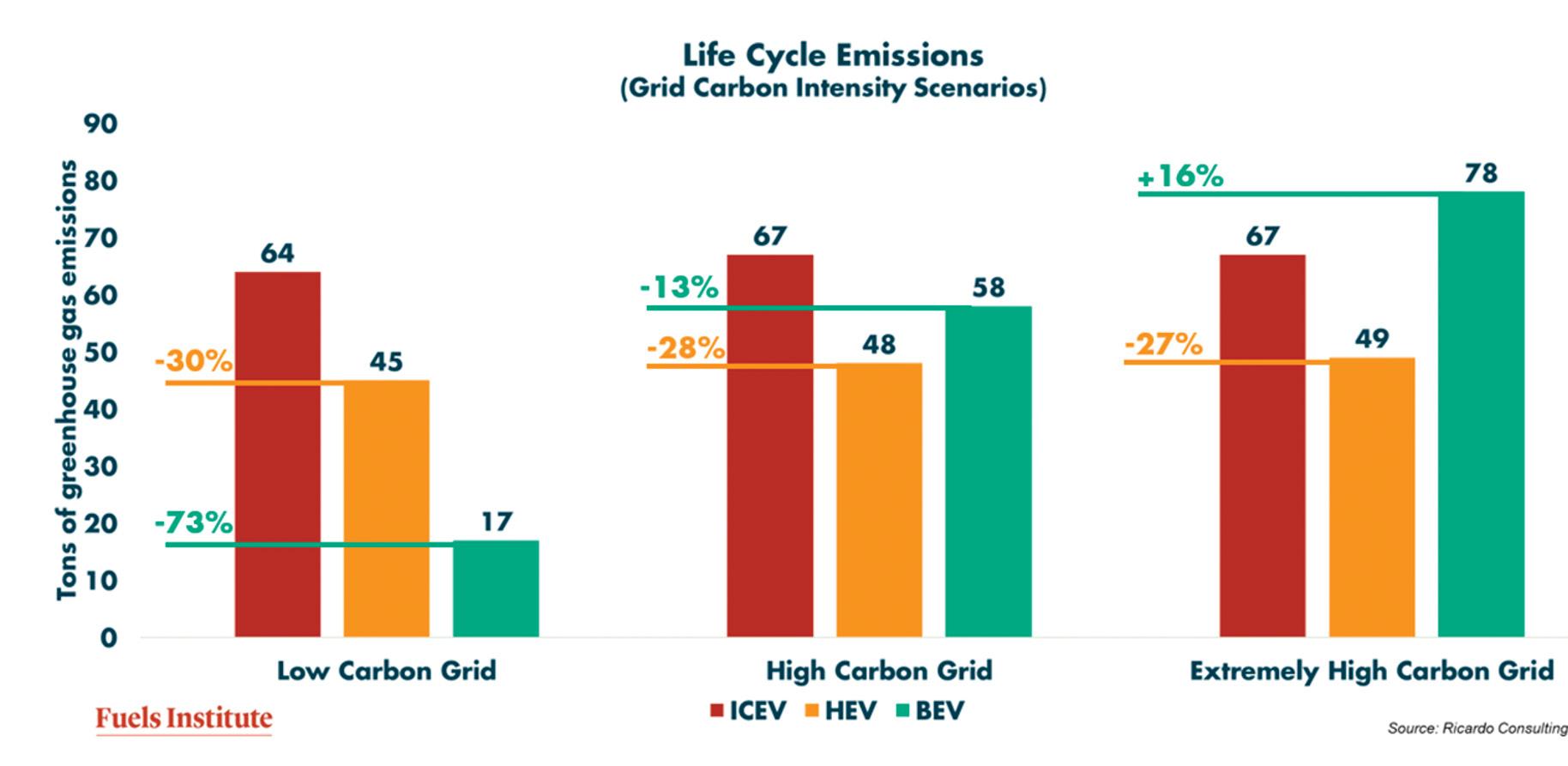
But we cannot underestimate the importance of affordability. To affect significant change long term, we need to turn the fleet over to lower emitting vehicles. Yet, the price of a new vehicle will largely determine our ability to do that, and new vehicles are becoming less and less affordable, with the average price of a new vehicle surpassing $48,000 this year. Add to this the impact of inflation on financing costs (the way in which most Americans buy a vehicle), and rapid fleet turnover is becoming less attainable. Look at the following charts—as the average price for a new vehicle has increased, sales of new vehicles have decreased. This is not a coincidence and will slow down the rate of fleet turnover and, consequently, the pace at which we reduce carbon emissions.
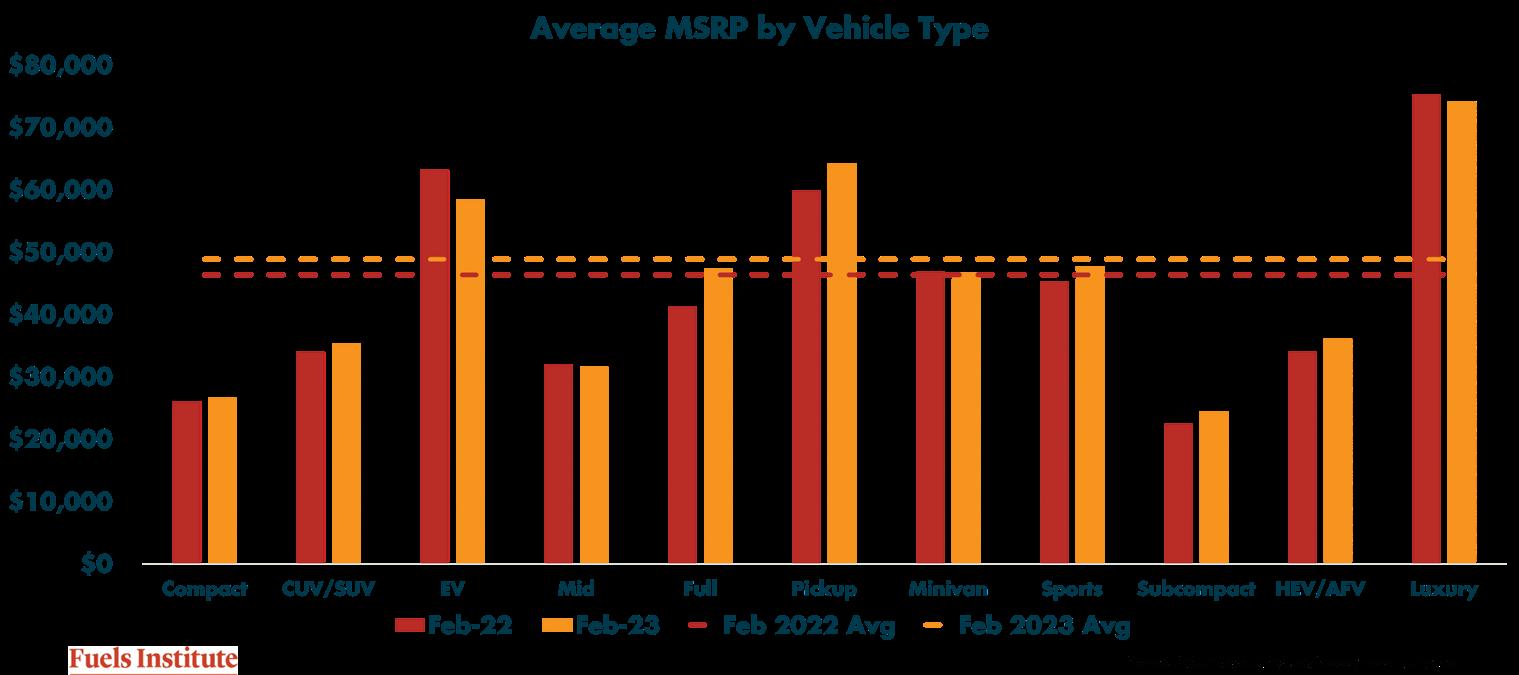
FuelsMarketNews.com 42 | FMN Magazine SUMMER 2023
The absence of a tailpipe does not mean that there are no emissions associated with the vehicle.
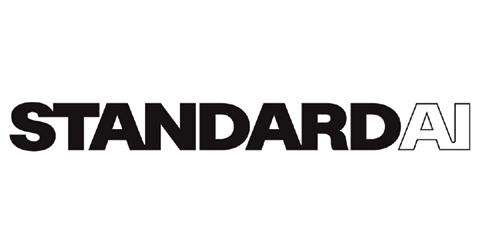















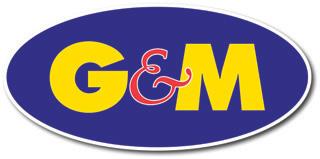


conexxus.org/join Info@conexxus.org Garnet Sponsors Emerald Sponsors Diamond Sponsors Thank You 2023 Conexxus Annual Sponsors Conexxus addresses technology standards to improve business processes, reduce costs and increase productivity for the convenience and fuel retailing industry.
John Eichberger is the executive director of the Transportation Energy Institute

A MORE STRATEGIC APPROACH …
I understand the attraction of simplicity. It is easier to understand, it is easier to explain, it is easier to say “job done.” But the transportation sector is complex, and if our goal is to reduce and eventually eliminate carbon emissions, we need to take a more strategic approach and may have to shift our definition of “business as usual” as we tackle this issue. A couple of ideas we have kicked around internally at the Transportation Energy Institute include the following:
• Adopt a life cycle approach to carbon reductions and encourage reductions anywhere in the production and use process for vehicles and their associated energy.
• Encourage utilities to adopt lower-carbon-generation technologies, smart grid management, and a portfolio of options that preserve the reliability and affordability of power.
• Incent fuel producers (petroleum and biofuel) to invest in low-carbon production strategies, such as carbon capture, low-carbon farming practices and conversion to renewable energy resources for their operational energy needs.
• Incent vehicle manufacturers to deploy BEVs to low-carbon electricity markets and deploy high efficiency ICEVs and hybrid electric vehicles to higher-carbon electricity markets. Overtime, as the grid becomes less carbon intense, these deployment strategies can evolve to take advantage of carbon-reduction opportunities.
• Revise the pathway approval process for new liquid fuels and/or renewable fuel feedstocks to increase the low-carbon options available for ICEVs.
• Accelerate fleet turnover by incenting consumers to trade in older, less efficient vehicles for newer, more efficient vehicles (this is contingent on affordability of new vehicles).
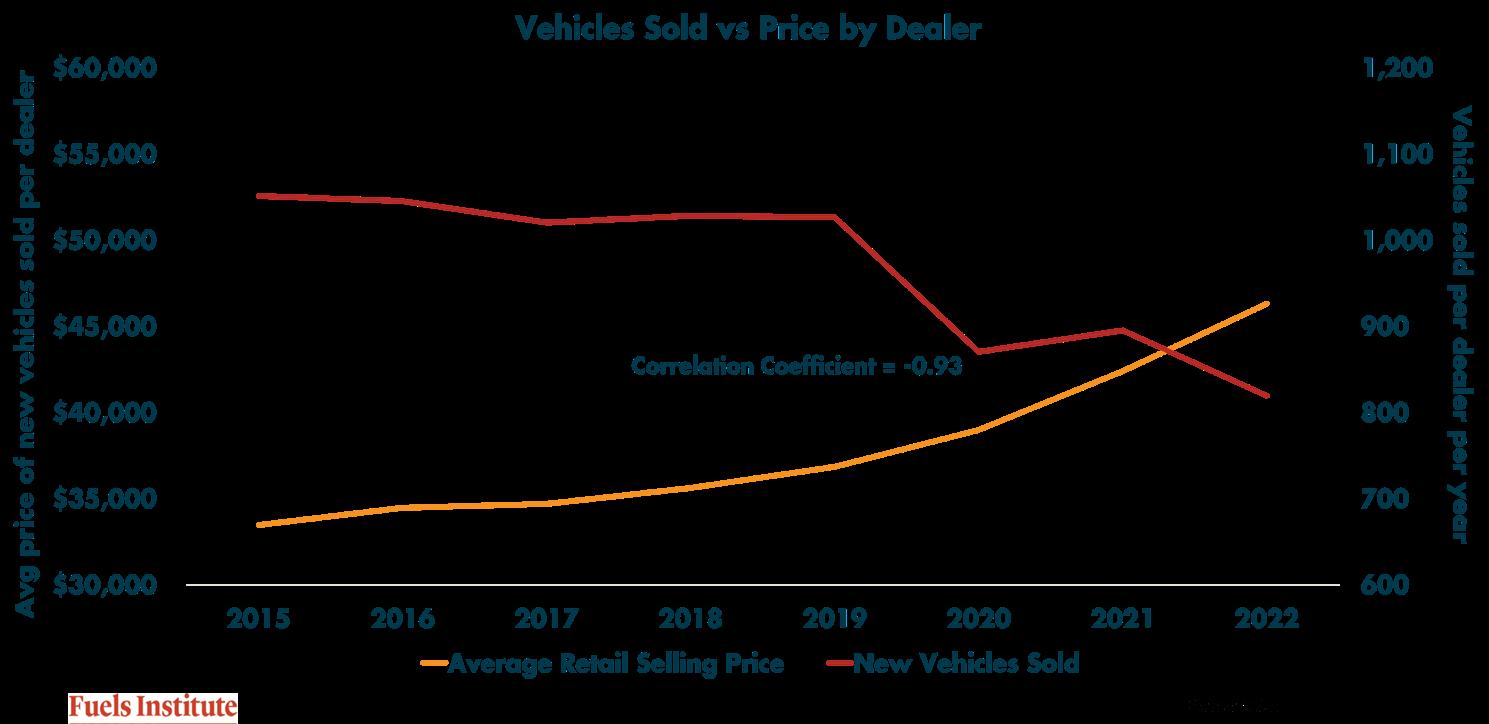
• Support expanded development of renewable fuel options, such as renewable natural gas, and the concurrent deployment of vehicles capable of operating on such fuels, especially for medium- and heavy-duty vehicles.
• Support investments in research and development for emerging fuels and technologies, including but not limited to:
• Hydrogen for fuel cells and ICEVs
• E-fuels produced from renewable resources
• Energy-dedicated crops for advanced biofuel production
• Low-carbon drop-in fuel products
These are just some ideas—the devil is always in the details. But to successfully reduce carbon emissions without imposing unacceptable financial harm on vehicle owners and operators, we must take a more holistic approach and implement strategies that fit the conditions and needs of the market being served. We can strategically deploy solutions at acceptable costs, but we cannot do so if we continue to rely upon simple solutions that play well in a sound bite but do not effectively achieve our objectives.
FuelsMarketNews.com 44 | FMN Magazine SUMMER 2023

The NACS Foundation Future Fund scholarship program helps propel tomorrow’s industry leaders by providing convenience and fuel retailers a way to retain, reward and develop the next generation of industry innovators. Submit Your Nominations for 2023-2024 Today* Visit conveniencecares.org/scholarship to download an application or email Laura Beck at support@conveniencecares.org Nominate A Rising Star From Your Company $3,000 NACS Foundation Scholarship Award *Application submission period ends Friday, June 5, 2023
STINKER STORES LAUNCHES PILOT WITH FEEDBACKNOW BY FORRESTER
Colorado, Idaho and Wyoming locations of Stinker Stores have launched a pilot with FeedbackNow by Forrester to enhance their mission to provide excellent service and convenience to their customers. The pilot includes a combination of Smiley Boxes, Multiple Choice Buttons and QR codes in strategic locations throughout the four pilot stores to capture customer feedback on food options, overall experience and restroom cleanliness. FeedbackNow devices collect input and correlate this data in one platform for instant and actionable ways to improve customer experience in real time. Stinker Stores will be able to test and iterate different ways to respond to and improve customer experiences and compare results across stores.
STUZO LAUNCHES RETAILER CONNECT
Stuzo, a provider of wallet steering solution powered by its Open Commerce product bundle, announced the launch of Retailer Connect. This is its fourth software product focused on empowering retailers to generate unmatched business outcomes and value. Stuzo launched Retailer Connect to address a set of significant business opportunities resulting from current solution gaps in the market for major energy and company owned and operated retailers, including enabling corporate management to set, measure and reward wallet steering program performance and outcomes.
OPW ENGINEERED SYSTEMS INTRODUCES THE STOP-LOK MULTI-APPLICATION COUPLER
OPW Engineered Systems has announced the launch and availability of its new Stop-Lok MultiApplication Coupler for use in connecting piping and hoses that are used in higher heat and pressure fluid-handling applications. This evolution of traditional union features a compact structure with increased functionality, with no tools required to complete the connection process. The Stop-Lok is suitable for loading and unloading fluids in chemical, water, steam, hydrocarbon and heating-and-cooling applications with pressures up to 400 psi. Ease of use is found in the Stop-Lok’s scalloped connection sleeve that allows for a hand-tight, tool-free connection that cannot be over-tightened, which lets the user know that “When It Stops, It’s Locked.”
SOUND PAYMENTS UNVEILS THE ARIES 8 FOR SOUND EASY PUMP
Sound Payments has launched the Aries 8 for the Sound Easy Pump pay-at-the-pump solution. The Aries 8 is the newest hardware running the cloud-based, retrofit EMV solution. It provides great flexibility and opportunity for future innovation. Sound Easy Pump is a semi-integrated secure solution that can easily and cost-effectively enable EMV at the pump in a couple of hours or less without purchasing pumps or closing a station. It supports contactless via card tap or NFC, QR code scanning, PIN-on-glass, remote key injection, MSR and EMV chip and PIN. With its sleek and modern design, the Aries 8 seamlessly integrates into the existing pumps at stations. Installation of the Aries 8 is even more simplified than the IM20 solution, decreasing the total install time. Stations can remain open during the installation and simultaneously run their new and old systems until completed.
UPSIDE AND PHILLIPS 66 EXPAND RELATIONSHIP
Phillips 66 and Upside announced an expansion of their relationship that will offer personalized cash back promotions to attract new customers at Phillips 66, 76 and Conoco branded sites. This expansion builds on a successful relationship in 2022, with Upside calculating that participating sites realized an average 82% return on investment, or an average $1.82 earned for every dollar spent to bring in new consumers through Upside. Upside states that its platform drove nearly 4% of all gallons sold at the nearly 1,500 participating branded sites in 2022. Looking ahead, Phillips 66 and Upside will work together to increase the number of participating sites on the platform, helping more stations take advantage of proven incremental value.
WESTERN GLOBAL INTRODUCES NEW LINE OF DEF STORAGE SOLUTIONS
Western Global, a leading manufacturer of fuel and fluid storage solutions, introduced two new diesel exhaust fluid (DEF) storage solutions, the DEF Cube and Top Tote. The DEF Cube is a standalone storage tank that’s ideal for large quantities of DEF and features a durable design outfitted for the most rugged environments. The Top Tote can be attached to the top of a TransCube Global fuel tank for a convenient, 2-in-1 diesel and DEF solution. Both the DEF Cube and the Top Tote provide a commercially available universal solution
INDUSTRY NEWS
FuelsMarketNews.com 46 | FMN Magazine SUMMER 2023
for DEF storage and offer a convenient option to help operations meet DEF requirements for Tier 4 Final engines. From excavators and wheel loaders to haul trucks and generators, Western Global’s DEF tanks connect to any engine with only a few small adjustments to the control pad.
COMDATA TO LAUNCH C-STORE POINT-OFSALE SOLUTIONS
Comdata, a FLEETCOR company, announced the upcoming release of a premier c-store point-of-sale (POS) solution for convenience retailers, travel centers and truck stops across the country. The Comdata CStore POS and payment solution, set to launch in late spring, is powered by GK CLOUD4RETAIL, ensuring innovative and flexible solutions in POS and payment capabilities. Comdata CStore will be available in both self-service kiosks and forecourt POS hardware, while being hardware independent. The integration of GK’s advanced cloud and store technology will transform Comdata’s SmartDESQ into a next-generation retail
platform. Comdata will offer solutions that enable convenience retailers to improve the customer experience and drive operational efficiencies.
DOVER FUELING SOLUTIONS INTRODUCES DX POWER
Dover Fueling Solutions, a part of Dover Corporation and a leading global provider of advanced customer-focused technologies, services and solutions in the fuel and convenience retail industry, has announce the launch of DX Power within the European, Middle Eastern and African region. DX Power is a solution that integrates electric vehicle chargers with Prizma, DFS’ connected mobility and convenience hub, to provide retailers with improved visibility and control and customers with flexible payment options. DX Power leverages the Prizma ecosystem and existing loyalty programs on fuel retail sites to ensure EV chargers are included in transactions through the POS. This gives customers the additional ability to pay with cash, as well as traditional bank (credit or debit), local account and fleet cards.
OUR ADVERTISERS
ADD Systems Back Cover www.addsys.com American Coalition for Ethanol 5 www.ethanol.org AutoBrite Inside Front Cover www.autobriteco.com Conexxus 43 (703) 518-7960 www.conexxus.org Cross Blend Protection 3 Cummins & White 29 www.cumminsandwhite.com Lock America 29 www.laigroup.com NACS Foundation 33 & 45 247Day.org conveniencecares.org/scholarship NACS Show 27 nacsshow.com/SAVE300 Trinium Technologies 7 www.triniumtech.com TruAge Inside Back Cover www.mytruage.org Thank you to these advertisers who have demonstrated their support of the fuels industry by investing in Fuels Market News.
FuelsMarketNews.com FMN Magazine SUMMER 2023 | 47
Is Gasoline a Commodity?
BY KEITH REID
“Gasoline, the backbone product of the petroleum industry, is becoming a commodity instead of a specialty,” said C. L. Suhr, president of the National Petroleum Association, at an industry meeting. This was printed in the April 23, 1936, issue of National Petroleum News magazine in an article titled “Gasoline Becoming a Commodity and Will be Sold as Such.”
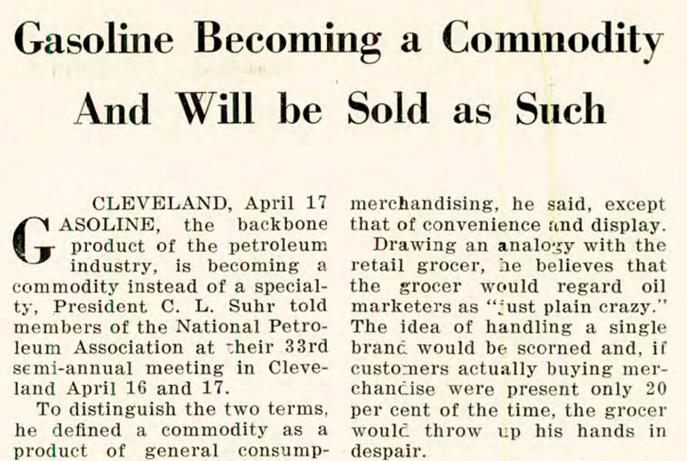
The article defined a commodity as: A product of general consumption, sold under commonly accepted specifications, developed through long usage. Its selling price is governed by the law of supply and demand and is quoted daily or even hourly in market prices. The sources of manufacture of a commodity is of no particular importance to its final purchaser.
A specialty product was described as: A product which, by reason of its individuality, commands a higher price not seriously affected by the law of supply and demand. Its source of manufacture is generally quite important in the eyes of the purchaser
Both definitions hold true today.
The gasoline-as-a-commodity sentiment is common today. And yet, it is hardly universal. Many people still view gasoline as a specialty product and brand loyalty driver. This despite
base, unbranded gasoline being a fully functional and reliable product, and with many independent and major branded outlets that take the extra additive effort to offer fairly comparable Top Tier performance gasolines. The NACS 2023 Consumer Fuels & Industry Image Survey showed 57% of gasoline buyers preferred a “certain gas station or chain.” Among those, 50% cited the quality of fuel as a motivator for that preference.
The 1936 article reflects a time when the rough-and-tumble Wild West days of the petroleum industry were starting to become “civilized.” Gasoline quality had been highly variable since the relatively sudden rise of the automobile in the 1920s made it an exciting product. Stable, higher-octane levels were crucial to provide “no-knock performance” for the vehicles on the road. By the late 1930s, gasoline quality had largely stabilized. Tellingly, the issue featured an advertisement promoting Ethyl gasoline (with octane-boosting tetraethyl lead).
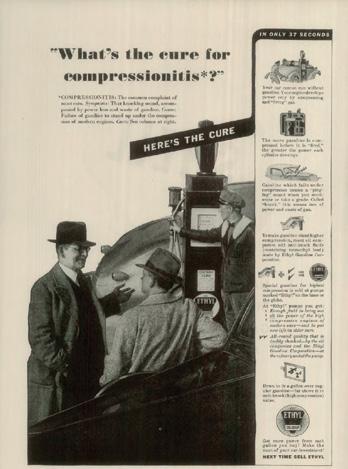
Suhr feared the gasoline industry would follow the experience of the railroads in the 1880s when their service became more of a commodity. The results were aggressive price wars and rebating that damaged the participants severely and eventually saw the
industry fall under government regulation. That did actually play out with gasoline to some extent in the decades that followed, though typically more sporadic and local than national, with vicious price wars that only dropped from the scene when the fueling landscape changed after the Arab oil embargo in 1973.
The article noted that the overall impression of the brand, from its architectural design to the quality of service provided by the attendant, had become the primary driving factor in consumer perception. Both ring true in today’s industry. One area where Suhr got it wrong was his thought that a single station would provide multiple brands of gasoline to the customer. He noted grocers must think oil marketers are “just plain crazy” for handling a single brand.

While he was not alone in noting this concept, the commodity aspects themselves worked against such a business model. Instead, operators delivered a single, quality gasoline brand, then concentrated on providing excellent service in ancillary profit centers like automobile lubrication, then later tires, batteries, and accessories and finally the convenience store.
However, in a roundabout way Suhr was correct. In today’s world there are plenty of multibranded marketers who supply multiple fuel brands to retail customers, and retailers who run different branded outlets in their networks to meet specific, local market needs and provide differentiation opportunities.
For more than 100 years, from its founding in 1909 to when it went out of business in 2013, National Petroleum News (NPN) documented the rise of petroleum marketing and retailing in the United States. NACS, PEI and The Fuels Institute have catalogued the rich history of NPN in its entirety. Each issue of Fuels Market News will look back at the history of our vibrant industry, through the eyes of NPN, to see how it reflect the issues, challenges and opportunities we face today.
REMEMBER THIS?
Keith Reid is editorin-chief of Fuels Market News. He can be reached at kreid@fmnweb.com
FuelsMarketNews.com 48 | FMN Magazine SUMMER 2023



The most secure digital solution for ID checks INTRODUCING Take the guesswork out of age verification TruAge makes age verification more reliable and accurate at the register and beyond—so you can keep adult products out of underage hands. Join TruAge today to lead the future of retail. Sign up at www.mytruage.org © TruAge®. All Rights Reserved.










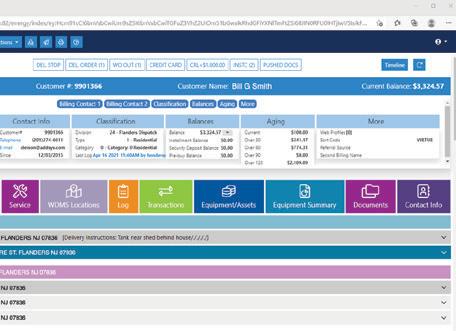


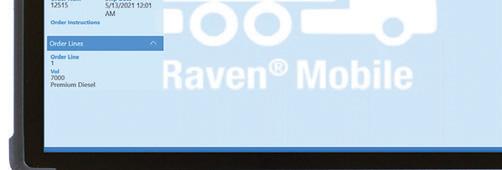




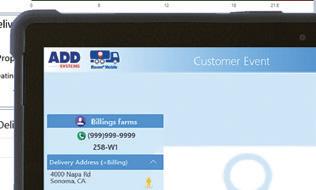
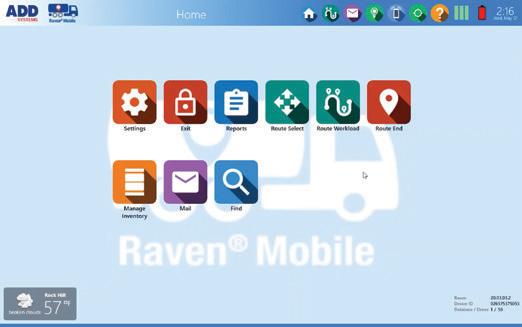



SOFTWARE FOR THE PETROLEUM & CONVENIENCE STORE INDUSTRIES Learn more at addsys.com 800-922-0972 SYSTEMS ALWAYS MOVING FORWARD Thank you to our clients for consistently collaborating with us to bring innovative software solutions to the industry. Experience that fuels the Future Your driver Jim B will be delivering fuel today to 12 East 2nd St. Anywhere, NC ADD ENERGY Co.

























 BY KEITH REID
BY KEITH REID







 BY MARK TENTIS
BY MARK TENTIS















































































